News and educational articles to help you run your business in the manufactured home industry.

RICHEST INDUSTRY CONTENT AVAILABLE ANYWHERE!
IN THIS ISSUE:
Analysis of AB 2778 and AB 2539 –Victory in Defeat
MHARR History and the Future of the HUD Code Industry
Digital Frontiers: Transforming the Landscape of Real Estate Investing with High-Tech and more!
Sponsored by:


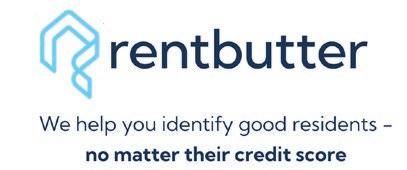
2024 | Quarter 2
Brian S Wesbury – Chief Economist, Robert Stein, CFA – Dep Chief Economist, Strider Elass – Senior Economist, Andrew Opdyke, CFA – Senior Economist, Bryce Gill – Economist, Nate Gerze – Economic Analyst
Nichole Stohler
Table of Contents Can You Own a Wind Zone II Home for Less Than a Wind Zone I Home? 3 By Kurt D Kelley, JD It’s Hard to Screw Up Buying a Mobile Home Park if You Follow These Three Rules 5 By Frank Rolfe Digital Frontiers: Transforming the Landscape of Real Estate Investing with High-Tech 7 By Joe Fairless First Trust Monday Morning Outlook - Elections Matter 9
Opportunity is Knocking 10 By Cody Dees, PhD MHARR History and the Future of the HUD Code Industry 13 By Mark Weiss, MHARR Why Inspect Raw Land and Dozens of Ways To Use It 15 By Due Diligence Partners The Legal Corner 18 By Kurt D Kelley, JD A Checklist to Evaluate a Manufactured Home Community 20 By Barbara
Analysis of AB 2778 and AB 2539 – Victory in Defeat 21 By Ryan D Jones, Associate Attorney When Squatters Strike: Why Squatting Is On the Rise—and So Hard To Solve 22 By Kiri Blakeley Exploring Investment Potential in RV Parks 27 By Terrydale Capital Very Bad Boys of Manufactured Housing 28 By George Allen Court Ruling Advances MHI and TMHA Case Against DOE 31 By MHAO, Manufactured Housing Association of Oklahoma Seize Opportunities to Appeal Property Tax Bills 32 By Molly Phelan, Esq How To Use AI For Due Diligence on MHC/RV Parks 22 By Joe Fairless Texas’ Manufactured Housing Booming 37 By TRERC “Reality Versus Empty Posturing” 39 By Mark Weiss, MHARR Affordable Housing & Mobile Home Park Investments in 2024 42 By Tristan Hunter, Keel Team LLC vs Trust for Real Estate: Which Is Right for You? 45 By
Hames-Bryant
Can You Own a Wind Zone II Home for Less Than a Wind Zone I Home?
In 1994, HUD created more stringent construction standards for manufactured homes sited proximate to the Gulf or Atlantic Ocean They created construction standards for three levels of homes – Wind Zones I, II, and III

The vast majority of the United States is open for any of these homes Wind Zone II homes are required in most Gulf and Atlantic coast adjacent counties Only Wind Zone III homes may be installed in coastal Southeast Louisiana, Coastal South Florida, Coastal Alaska, and all of Hawaii
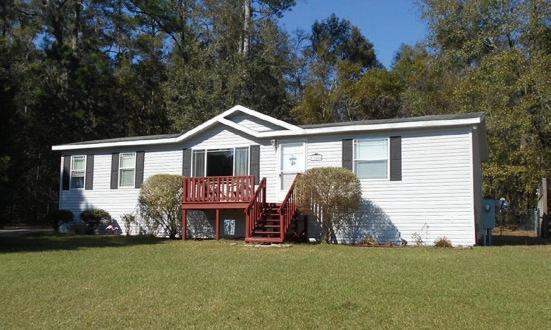
To find out what construction upgrades come with a Wind Zone II home, I called Legacy Housing Executive Kenny Shipley Mr Shipley reports the following upgrades are included:
1. Only 2”x4” interior wall studs (vs 2”x3” in Wind Zone I homes)
2. The exterior wall studs are closer together
3. Metal straps that reach from the frame to the flooring of a Wind Zone I home reach all the way to the rafters on a Wind Zone II home; and
4. More blocking and tie-downs during the installation
By Kurt Kelley, President, Mobile Insurance
Kenny added that one of the best investments he ever made was a hail proof roof he put on his West Texas home where hailstorms are a regular occurrence Investing in improved construction pays off
As repair costs have risen dramatically in the last four years, so has the cost of insurance

Searching for a manufactured homeowners insurance policy for a new $100,000 single section home in Oklahoma City yesterday, the lowest premium quoted was $1,800 by American Modern Insurance Company That’s a monthly insurance cost of $150
Oklahoma mandates insurance rate reductions for “fortified homes ” Louisiana, Mississippi, and Alabama do too Wind Zone II homes are considered “fortified homes.” While insurance discounts vary depending on the age of the home, a 10% premium reduction is typical for a Wind Zone II home For the $100,000 valued Oklahoma manufactured home noted above, a 10% insurance premium discount equates to an annual savings of $180, or $15/month
Mr Shipley advises that the wholesale cost of a single section Wind Zone II home versus a similar Wind Zone I home varies, but $1,500 is an average He also reports that Wind Zone II homes require fortified installations that typically add another $500 to the installation cost The additional installation costs are driven by additional blocking and tie down requirements It’s reasonable to conclude that the additional cost of upgrading from a Wind Zone I to a Wind Zone II home is about $2,000
Does the insurance cost savings offset the additional $2,000 Wind Zone II home cost? Using a 20-year term and a 10% interest rate, that additional cost of $2,000 equates to $18/ month Thus, a home buyer choosing a $2,000 more expensive Wind Zone II home will pay a $2/month higher home loan plus insurance payment than they would for its Wind Zone I counterpart So yes, at least in four states, a Wind Zone II upgrade practically costs the home buyer nothing
No insurance carrier I contacted has conducted an underwriting analysis to determine how much lower the losses are for Wind Zone II homes Not only is the Wind Zone data often not asked on insurance applications, but very few home buyers purchase Wind Zone II homes in Wind Zone I areas
- 3 -
Photo courtesy of Claytonhomes.com
Photo courtesy of Howtolookatahouse.com
Kenny Shipley, Legacy Housing
Thus, there isn’t adequate experience data to know for sure
But aggregate loss data shows that wind generated losses account for roughly 40% of all manufactured homeowner insurance losses, though geographic location varies this number notably If wind generated losses are reduced 25% for Wind Zone II homes, that equates to a 10% loss reduction which is exactly the reduce rate dictated by the fortified home laws in Oklahoma, Louisiana, Mississippi, and Alabama

President of Mobile Insurance, an agency specializing in insurance for manufactured home communities and retailers. Member of numerous insurance companies’ policy development and advisory teams. One of largest manufactured home specialty agencies in the country. 2017- Present, Founder and Publisher of the Manufactured Housing Review, an industry publication dedicated to Manufactured Home Industry professionals. www.manufacturedhousingreview.com
Kurt D. Kelley, J.D. President, Mobile Insurance Kurt@MobileAgency.com www.mobileagency.com
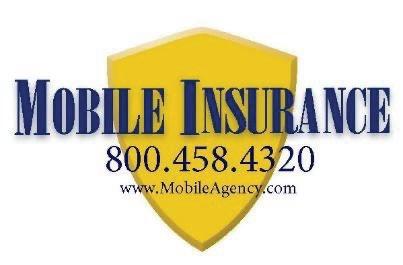

- 4 -
Cont.
Can You Own a Wind Zone II Home for Less Than a Wind Zone I Home?
It’s Hard to Screw Up Buying a Mobile Home Park if You Follow These Three Rules
I’ve been buying and running mobile home parks for 30 years and I’ve had plenty of lessons learned in the process From my first park Glenhaven – which was as tough a turn-around as you could ever find – to some much nicer properties that only needed better management to flourish, I have carefully noted what worked and didn’t work And here are the three main rules I learned from that science of observation and testing If you follow these three rules, it’s really hard to screw up buying a mobile home park

Rule #1: The Necessity of Due Diligence
Benjamin Franklin once said that “diligence is the mother of good luck” and he’s 100% correct I’ve never seen a mobile home park buyer do poorly who exercised good due diligence habits That includes all the pain-in-the-neck aspects like getting market comps and verifying certificates of zoning I’ve found that virtually every park owner who has ever failed decided to skip necessary diligence steps, or rely on seller information without verification. You can never safely buy a mobile home park without following the science of diligence I feel so strongly on this topic that my partner Dave Reynolds and I wrote an entire book about it called “30 Days of Diligence” I think the main reason that I have bought hundreds of parks without a single major failure is because I am the eternal pessimist and I believe the only way I can avoid disaster is with good due diligence
Rule #2: Liquidity Is Key
The late Sam Zell was a firm believer – or evenly zealous advocate – of liquidity, which he defined as being the innate ability of a property to be sold or financed at the drop of a hat. He got the nickname “the Gravedancer” because he had the ability to get out of real estate sectors (most notably office buildings) quickly before the rest of the herd figured it out. To be truly liquid, a mobile home park needs the following attributes:
By Frank Rolfe
• Alignment with lenders Bankers want properties that have few park-owned homes, stabilized occupancy, solid infrastructure and strong market dynamics If you want to be able to get a loan – in both good times and bad – you want to be aligned with what lenders want
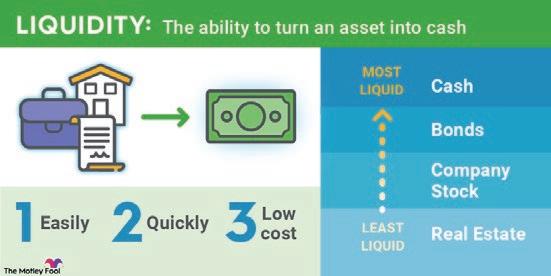
• Refuse to be “undercapitalized” Budget properly and don’t get involved in deals you really can’t afford when you factor in capital expenditures or other risks (like a failed packaging plant). If you need a financial partner, get one Don’t just hope that bad things won’t happen as they always will
• Only buy properties that are desirable enough to attract plenty of buyers when you want to sell Buyers want properties that make money with little risk Provide that

Rule #3: Don’t Lower Your Standards
Here’s where I see many problems start A buyer can’t immediately find a deal that meets their criteria so they decide to lower their standards and accept a park acquisition that is contrary to what they know to be a smart move. You see this particularly with 1031 buyers who are running out of time and go ahead and elect to buy things that they know are probably
- 5 -
Photo courtesy of Veracity Trust Network
Photo courtesy of The Motley Fool
Photo courtesy of Nucleus.com
It’s Hard to Screw Up Buying a Mobile Home Park if You
Follow These Three Rules Cont.
a bad idea Most mobile home park buyers are only trying to buy one park or maybe a couple They need to display patience and not lower their standards just to get something purchased. If you find yourself tempted to do so, you need to focus on your volume of deals considered as a low volume will make you more likely to try to push things rather than let them grow naturally If you hit all the industry brokers, on-line listings and do a strategic campaign of cold-calling and direct mail, you should find plenty of options and it will give you greater confidence to stick with your original minimum standards.
Conclusion
Mobile home park assets are amazingly reliable to produce cash flow and to whether every economic storm. Most deals that go bad are the direct result of the buyer making mistakes and getting lazy All the raw material is there in any deal to be properly examined and sorted on the front end. You have to really work at it screw up buying mobile home parks Follow these three rules and you are virtually assured of making money with your mobile home park investment

Frank Rolfe has been a manufactured home community owner for almost three decades, and currently ranks as part of one of the ten largest community owners in the United States, with more than 16,000 lots in 20 states in the Great Plains and Midwest. His books and courses on community acquisitions and management are the top-selling ones in the industry. To learn more about Frank’s views on the manufactured home community industry visit www.MobileHomeUniversity.com


- 6 -
Digital Frontiers: Transforming the Landscape of Real Estate Investing with High-Tech

Real estate investing is undergoing a profound transformation driven by the advent of high-tech innovations These digital frontiers reshape the industry and alter traditional property investment, management, and sales methods Today’s investors are navigating a landscape where technology enhances operational efficiency, maximizes profitability, and opens new avenues for market analysis and investment opportunities This article explores the critical technological innovations revolutionizing real estate investing
The Rise of PropTech
The convergence of property and technology, PropTech, is at the heart of this transformation PropTech startups are innovating rapidly, introducing digital solutions that streamline transactions, management, and real estate financing. These technologies simplify processes and improve transparency and accessibility, making real estate investment more appealing and attainable for a broader audience
Blockchain:
The New Backbone of Real Estate Transactions
Blockchain technology is redefining security and transparency in real estate transactions By providing a decentralized ledger for recording transactions securely and transparently, blockchain minimizes the need for traditional intermediaries, reducing costs and increasing efficiency. Smart contracts automate and enforce contract terms, offering security and trust previously unattainable This technology is particularly impactful in title management, as it can create immutable and verifiable records, streamline the title search process, and reduce fraud
Artificial Intelligence and Machine Learning
Artificial Intelligence (AI) and Machine Learning (ML) are unlocking new market analysis and investment decisionmaking potentials These technologies can analyze vast datasets, identifying patterns and trends that human analysts might overlook From predictive market analyses to automated property valuations, AI and ML empower investors
By Joe Fairless
with insights derived from data, enabling more informed and strategic investment decisions
Virtual and Augmented Reality: A New Vision for Property Viewing
Virtual Reality (VR) and Augmented Reality (AR) technologies are transforming property viewing and marketing Investors can now explore properties through immersive virtual tours, experiencing spaces in 3D without physical site visits This saves time and resources and enables investors to assess properties globally, expanding their investment horizons beyond local markets
The Internet of Things: Enhancing Property Management
The Internet of Things (IoT) revolutionizes property management by making buildings more intelligent IoT devices monitor and control various aspects of a property in real-time, from energy consumption to security systems This technology enables more efficient management, reduces costs, and improves tenant experience For investors, the ability to offer cutting-edge property management solutions can significantly increase the value and appeal of their assets.
Crowdfunding and Real Estate Investment Platforms
Crowdfunding and online real estate investment platforms democratize access to real estate investment By pooling resources from multiple investors, these platforms allow individuals to invest in high-quality real estate projects with smaller capital outlays This model broadens the investor base, fostering a more inclusive investment landscape and enabling more people to participate in real estate investment opportunities
Big Data and Analytics: Refining Investment Strategies
The integration of Big Data and analytics is refining real estate investment strategies Investors can leverage datadriven insights to identify trends, assess risks, and pinpoint investment opportunities Big Data analytics facilitate a deeper understanding of market dynamics, consumer behavior, and economic indicators, enhancing the ability to make wellinformed investment decisions
Navigating the Challenges
While integrating technology in real estate investing offers numerous benefits, it also presents challenges. Significant hurdles include cybersecurity risks, data privacy concerns, and the digital divide Additionally, the rapid pace of technological change demands constant learning and adaptation from investors Overcoming these challenges requires a proactive approach, including investing in cybersecurity measures, ensuring compliance with data protection regulations, and staying abreast of technological advancements
- 7 -
Photo courtesy of Aloa Blog
Embracing the Future
The future of real estate investing is indelibly linked to technology As digital innovations continue to evolve, they promise to disrupt further and redefine the industry. For investors, staying informed about these changes and embracing new technologies is crucial to navigating the digital frontier successfully The willingness to adapt and innovate will distinguish the leaders in the next generation of real estate investing
The landscape of real estate investing is being transformed by high-tech innovations, offering unprecedented opportunities for efficiency, analysis, and accessibility. These technologies, from blockchain and AI to VR and IoT, reshape how investors
approach the market While challenges exist, the potential benefits of integrating these digital frontiers into real estate investing are immense As the industry continues to evolve, embracing these technologies will be vital to unlocking new possibilities and achieving success in the dynamic world of real estate investment

With a successful career as a real estate investor under his belt, Cincinnati-based Joe Fairless has become an authority in the business of property ownership. In addition to his podcast, The Best Real Estate Investing Advice Ever Show (which is the longest-running daily podcast about real estate in the world), he frequently speaks at events and writes for publications like Forbes and Entrepreneur.
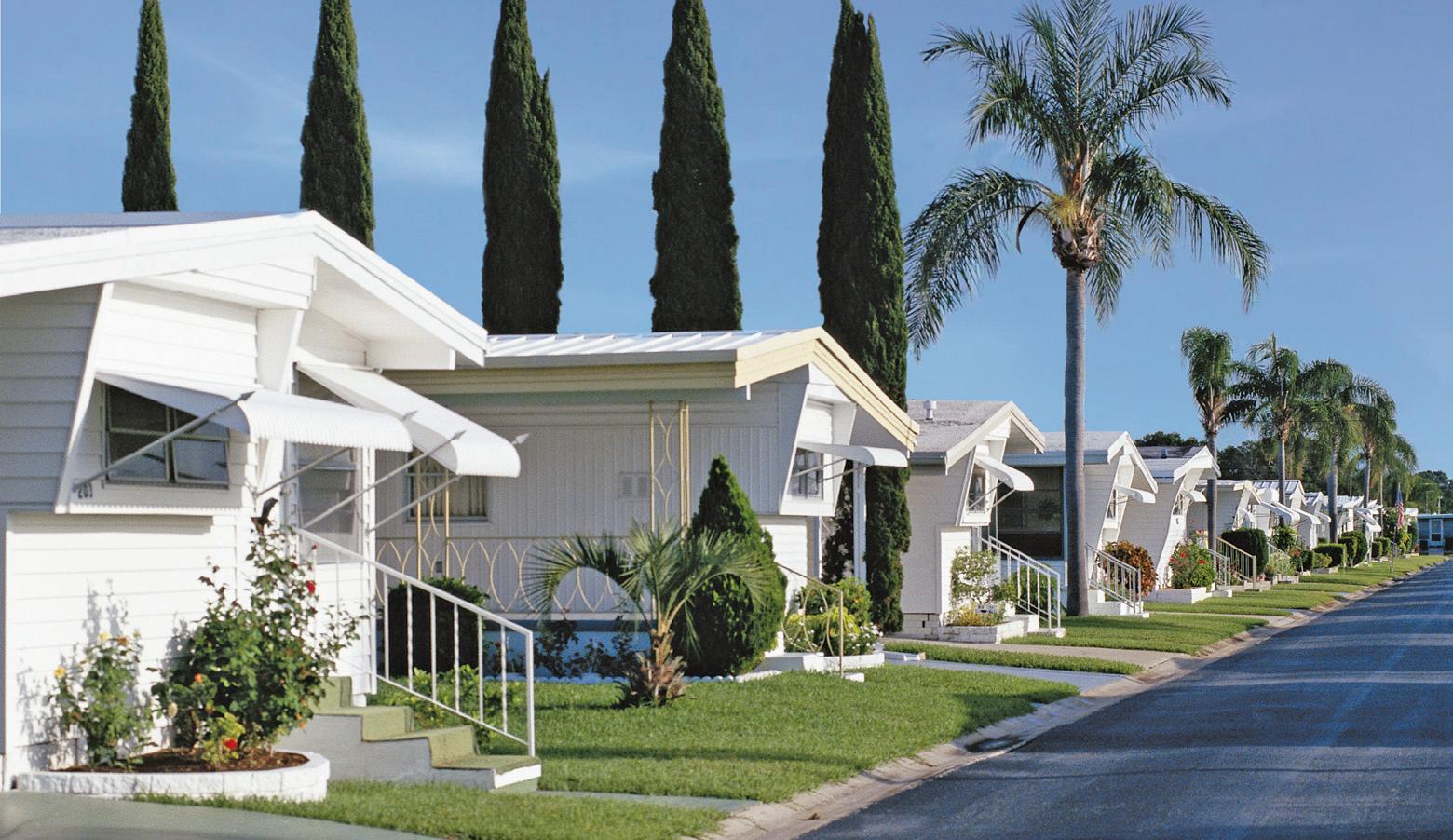

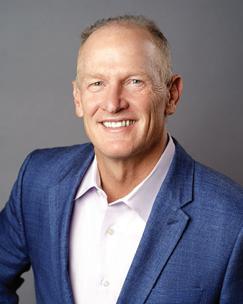
- 8Kurt Kelley - President Manufactured Home Retailers Manufactured Home Community Owners Call or email today for a free consultation Special INSURANCE PROGRAMS with Industry Leading Value INSURANCE MOBILE 800-458-4320 • Retailers • Communities • Developers • Transporters • Installers Protect your Investments 800-458-4320 service@mobileagency.com Digital Frontiers: Transforming the Landscape of Real Estate Investing with High-Tech Cont.
Joe Fairless

Many, us included, see parallels between today’s big issues and those of the 1960s and 1970s. Mistakes in both geopolitical and fiscal policies compound overtime, often leading to more mistakes. After Vietnam ended badly, US weakness likely encouraged terrorism. The 1972 Munich Massacre of Israel Olympic Athletes, Entebbe in 1976, and finally US hostages held in Iran from 1979 to 1981.
At the same time both fiscal and monetary policy became unhinged. The result was stagflation, with inflation hitting and unemployment approaching double digits. We don’t have room for a complete historical explanation, but Presidents Johnson, Nixon, Ford, and Carter each made mistakes in either foreign or fiscal policy that led to these problems.
Then, Ronald Reagan was elected, and while his opponents claimed he would cause nuclear war, the exact opposite happened. Stagflation was ended, the Berlin wall fell, and the world entered a mostly peaceful era. Elections matter.
With Iran attacking Israel over the weekend, and unsustainable budget deficits eroding the US fiscal situation, we are reminded of the 1970s. In fact, there were two decisions made under President Carter almost fifty years ago that have helped create both of these issues.
We focus on policy, not personality. We are not attacking President Carter himself. He appears to be a very good and decent man. His great charitable work after leaving the presidency speaks for itself and sets a great standard for other former officeholders. In addition, President Carter bucked his party and deregulated both the trucking and airline industries.
However, Carter also made some serious blunders. On the geopolitical front, it was Carter who decided (1) not to back the Shah of Iran in 1978 and after that (2) not to pursue regime change in Iran after the seizure of American hostages and a coup d’état against the duly-elected Iranian President Banisadr (who had to flee for his life back to France).
Now the Islamic Republic of Iran effectively controls Syria, much of Iraq, Lebanon, Gaza, some of Yemen, and in the meantime is aligning with rivals of the US, such as China and Russia. With every passing decade it has become more difficult to dislodge the regime in Iran and now, in the absence of a change in the near future, it may only be a matter of time before Iran is able to acquire a nuclear weapon.
On the fiscal side, President Carter also championed an arcane but incredibly important change to Social Security enacted in 1977. This change virtually guaranteed the long-term insolvency of the old-age pension portion of the Social Security system unless future policymakers agree to some combination of tax hikes or benefit cuts.
Before these changes were made, Social Security payments were adjusted by inflation, what we call the cost-of-living adjustment (COLA). Until the mid-1970s, Congress had to vote to make this adjustment and politicians took credit every time they did. But, as inflation became more of a problem, the annual COLA was tied directly to the Consumer Price Index.
The COLA adjustment automatically increased both current and future benefits. But Carter added a wrinkle. Current recipients would receive the COLA adjustment, but future benefits would rise by both the COLA plus an estimate of real wage gains. At first this made little difference, but through the magic of compounding, this adjustment for real wages adds up and the current trajectory of payments is unsustainable.
Carter and other policymakers were warned about this problem at the time, but didn’t pay it heed. No wonder people see similarities between today and the 1970s. Current policies and past policies are colliding to create the very same problems. As November approaches, voters would do well to remember this history. Their decisions are not just about the next few years, but will resonate for decades to come. Solid US leadership can change the entire world.
- 9Consensus forecasts come from Bloomberg. This report was prepared by First Trust Advisors L. P., and reflects the current opinion of the authors. It is based upon sources and data believed to be accurate and reliable. Opinions and forward looking statements expressed are subject to change without notice. This information does not constitute a solicitation or an offer to buy or sell any security. Date/Time (CST) U.S. Economic Data Consensus First Trust Actual Previous 4-15 / 7:30 am Retail Sales – Mar +0.4% +0.4% +0.7% +0.6% 7:30 am Retail Sales Ex-Auto – Mar +0.5% +0.9% +1.1% +0.3% 7:30 am Empire State Mfg Survey – Apr -5.2 -12.8 -14.3 -20.9 9:00 am Business Inventories – Feb +0.3% +0.4% +0.4% 0.0% 4-16 / 7:30 am Housing Starts – Mar 1.484 Mil 1.485 Mil 1.521 Mil 8:15 am Industrial Production – Mar +0.4% +0.4% +0.1% 8:15 am Capacity Utilization – Mar 78.5% 78.5% 78.3% 4-18 / 7:30 am Initial Claims – Apr 13 215K 213K 211K 7:30 am Philly Fed Survey – Apr 2.3 -5.8 3.2 9:00 am Existing Home Sales – Mar 4.200 Mil 4.070 Mil 4.380 Mil
Brian S. Wesbury – Chief Economist Robert Stein, CFA – Dep. Chief Economist Strider Elass – Senior Economist Andrew Opdyke, CFA – Senior Economist Bryce Gill – Economist Nate Gerze – Economic Analyst 630-517-7756 • www.ftportfolios.com April 15, 2024 Elections Matter
Opportunity is Knocking
Since the 1950s, the American working class and the progress of industry required living arrangements which were both cost effective, and which could be transported to new sites as needs required However, despite the demand of the American people for such housing, the places to secure such mobile dwellings (mobile home parks) have never been cast in a positive light Derogatory labels such as “trailer parks” whose residents were then deemed, “trailer trash” came in to being to discourage investment into affordable living options Surprisingly, despite the obvious negative press, the manufactured home industry failed to counter such social conjecture and sat passively as its products and patrons were portrayed poorly in all forms of media The passivity didn’t stop at ‘name-calling’ though, as the manufactured home industry also let state and federal governments pass rulings to make their homes less affordable, via the imposition of more and more red tape However some positive winds have drifted toward the manufactured homes industry in recent years

• With the advent of e-commerce, products and goods no longer required brick and mortar store fronts and with the advent of COVID, most workspaces required teleworking to promote social distance These two events practically mooted the need for office and retail properties and elevated the status of mobile home parks to an equivalent productivity and prestige as any 44-story office building, but with staggeringly less cost and maintenance
• Decentralization of Supply: When many industrial and warehouse properties were originally constructed, the types of forklifts and racks had been static for decades,
By Cody Dees, PhD
and ceiling heights were only built to accommodate them Today the average industrial and warehouse property is way too short to be used, and too expensive to make the ceilings taller This means that drop-shipping and other supply methods are becoming more preferable to keeping massive amounts of stock on hand As a result, the decreased requirement for physical space is causing the lowly mobile home park to appear a far better investment potential
• Restrictive Zoning: Warren Buffett has long praised a “moat” as the most important aspect to investing as it blocks competition in the form of additional supply Developers know no bounds when there’s a property to be built, and American real estate has suffered through the continual cycle of over-building and collapse many times The current cycle is perhaps the most painful in American history as it combines over-building with the absence of demand, which may not be able to be solved by time alone Self-storage, as an example, has seen a couple billion square feet added since Covid and today occupancy and rents are plunging on this former darling of Wall Street This is in contrast to mobile home parks, which have not been allowed to expand or build new sites for nearly 50 years Restrictive zoning has now proven to be the greatest blessing for mobile home parks, as it has maintained an attractive ratio of supply and demand
In consideration of the above, mobile home parks have begun to prove themselves to be a better investment vehicle than all other forms of real estate Given this upturn, antiquated terms like, “trailer trash” are being swapped for “blue-chip cash” It has taken about 70 years for the industry to see over the horizon and into a veritable field of opportunity, but the day has finally arrived wherein the manufactured homes industry as a whole has begun to eclipse the investment potential of conventional housing solutions However, the questions still stands… How do we capitalize on this turn of fortune? Just throwing money at the industry won’t undo decades of bad press, but there are a few things that might
• Push Back Against the Media: Remember the John Oliver segment on the manufactured homes industry in 2019? If not, I wouldn’t encourage you to watch it for two reasons; 1) it was scathing and 2) the industry did not publish even one rebuttal to the near slanderous segment As perhaps the only silver lining available, the broadcast reminds us that we can’t sit back and wait for others to speak in our defense As members of the manufactured homes industry,
- 10 -
Photo courtesy of IMBD.com
Opportunity is Knocking Cont.

and as community leaders, we need to learn that all negative news coverage needs to be addressed with facts Frank Rolfe is a good lead on this effort, as he does weekly updates every Thursday [link to sign up], where he points out the inconsistencies of anti-industry voices and presents truths in response to their claims
• Taking Political Action: ‘Politics’ can sound pretty scary, I agree, but there are some simple ways that even the most reserved of park owners can get involved: 1) by joining your state MHA, which lets them use their lobbyists to stop bad legislation and promote positive laws and rules, and 2) staying in contact with the your state and federal representatives to let them know your individual perspectives as a mobile home park owner It is surprising how few people reach out to their representatives and politicians, so and you will likewise be surprised at how seriously they take your insights
Recreate the Narrative: We’re never going to convince the American public that “trailer park” is derogatory term, but does that really matter if we can convince them that ‘trailer parks’ are desirable? There’s plenty of demand for manufactured housing, as there is plenty of demand for affordable housing Zero effort is required to raise awareness that people want to spend less money on housing solutions, however… it is the stigma of the ‘mobile home’ that needs attention People need to be reintroduced to the reason manufactured homes were spurred into existence Affordable housing which can be delivered on demand is a great industry, and one to be proud of! Let’s help the world remember that we are the answer to an unstable, unsustainable, and over-inflated market of 30year mortgages

CJ Dees, PhD
A multi-talented freelance writer with a diverse background and a passion for words. Experienced in social media marketing and professional blogging, he has learned to craft his unique insights for a multitude of audiences. An Air Force veteran and current Federal employee, his discipline and dedication are reflected in his writing. Cody is a savvy real estate investor and entrepreneur, always seeking new opportunities. His words not only inform but also inspire, making him a sought-after voice in the worlds of business and content creation.
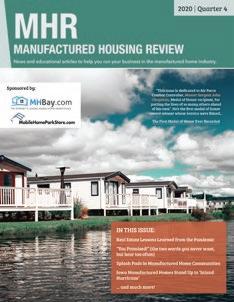
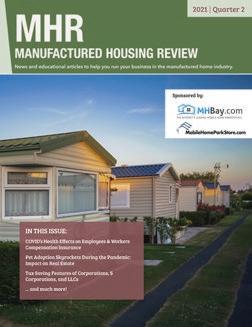
- 11 -
SUBSCRIBE! Manufactured Housing Review Magazine www manufacturedhousingreview com staff@manufacturedhousingreview com
Photo courtesy of IMBD.com
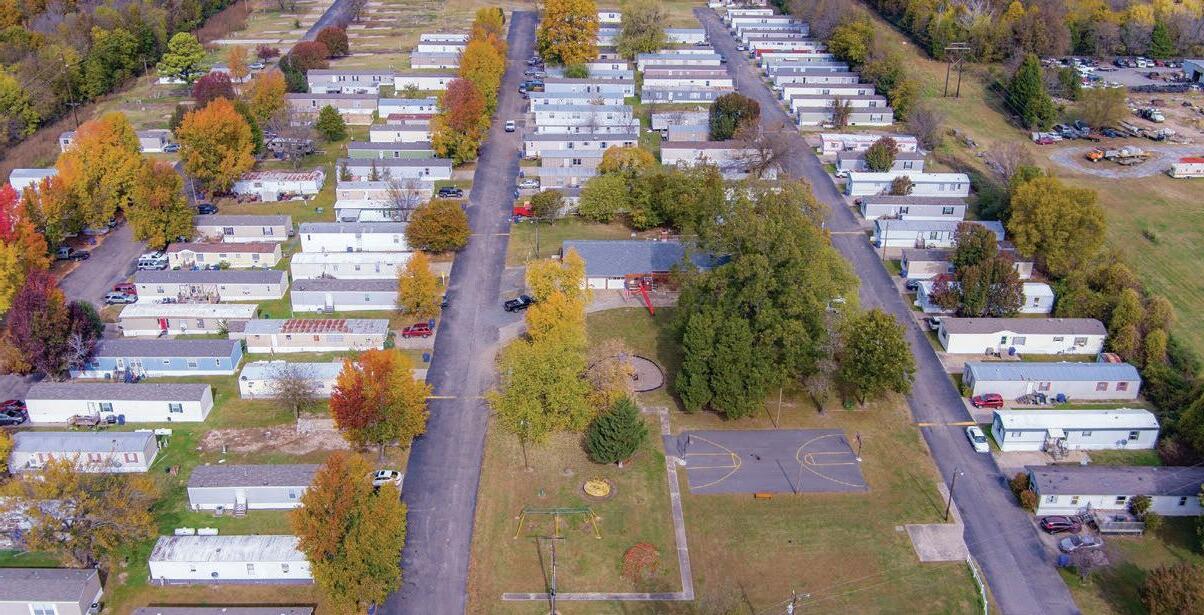
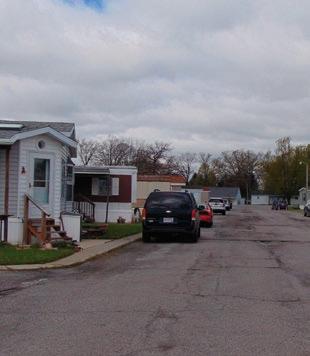
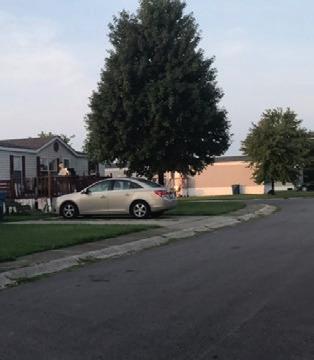
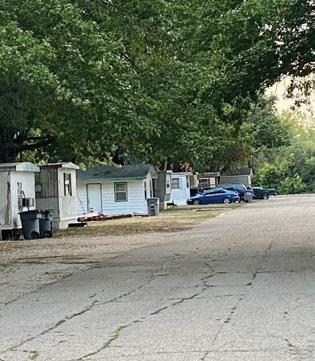
Park Owned Home Income Considered Up to 80% LTV 30 Year Amortization Quick Closings Flexible Terms Interest Only Options FLEXIBLE TERMS: $7,990,000 $2,350,000 $750,000 + Earn Out NW Ohio 4 N Lewisburg, OH Emporia, KS We Finance Communities. Call m or Email k Us Today 800-309-5008 or CLT@vmf.com Vanderbilt Mortgage and Finance, Inc., 500 Alcoa Trail, Maryville, TN 37804, 865-380-3000, NMLS #1561, (http: //www.nmlsconsumeraccess.org/), AZ Lic. #BK-0902616. Loans made or arranged pursuant to a California Finance Lenders Law License. All Loans Subject to Credit Approval.
MHARR History and the Future of the HUD Code Industry
Abrief history of the Manufactured Housing Association for Regulatory Reform (MHARR) and a summary of its accomplishments on behalf of the manufactured housing industry – are self-explanatory They illustrate, in a concise format, the role that MHARR has fulfilled, for nearly 40 years, on behalf of HUD Code manufacturers and the manufactured housing industry at large

This brief history, and the victories that MHARR has been able to achieve for the benefit of both the industry and American consumers of affordable housing, are particularly significant and relevant now, as the industry stands poised at a crucial cross-roads that will ultimately determine its long-term future and continued viability as the nation’s premiere resource for inherently affordable home ownership
Put simply, the industry today is building its best, most affordable, and most energy-efficient homes ever But even with the United States mired in an affordable housing crisis, which has seen housing costs rise to unprecedented levels, the annual production of manufactured homes since 2009 has averaged fewer than 78,000 homes per year and, over that same period, has only rarely exceeded the 100,000 home historical benchmark In large measure, this is due to the fact that the industry’s post-production sector representation has failed to aggressively demand the full enforcement and implementation of the enhanced federal preemption of the Manufactured Housing Improvement Act of 2000 in order to invalidate exclusionary zoning mandates and the Duty to Serve (DTS) directive of the Housing and Economic Recovery Act of 2008 (HERA) in order to compel the non-discriminatory treatment of manufactured housing personal property loans by Fannie Mae, Freddie Mac and the Federal Housing Finance
By Mark Weiss, MHARR

that have Simply stated, the industry cannot effectively market its mainstream affordable homes if those homes are excluded by discriminatory zoning and/or cannot be financed at reasonable and competitive interest rates
This failure cannot and must not continue Things can and must change in the nation’s capital As noted above (and on many previous occasions) there are specific laws put in place jointly by MHARR and the Manufactured Housing Institute (MHI) that were designed to address and resolve these issues, but these laws have remained ignored by the relevant authorities for far too long without concerted and highlytargeted industry push-back The current disarray of the industry’s post-production sector in Washington, D C must be remedied so the industry can achieve a crucial reset at the national level and revive its preeminent role in the affordable housing market – a change that can only be achieved with mainstream, affordable manufactured homes

Mark Weiss is the President and CEO of the Manufactured Housing Association for Regulatory Reform (MHARR) in Washington, D.C. He has served in that position since January 2015 and, prior to that, served as MHARR’s Senior Vice President and General Counsel.
Manufactured Housing Association for Regulatory Reform (MHARR) 1331 Pennsylvania Ave N.W., Suite 512, Washington D.C. 20004
Phone: 202/783-4087, Fax: 202/783-4075 MHARR@MHARRPUBLICATIONS.COM
- 13 -
Photo courtesy of gamblingaffiliatevoice.com
Photo courtesy of medium.com
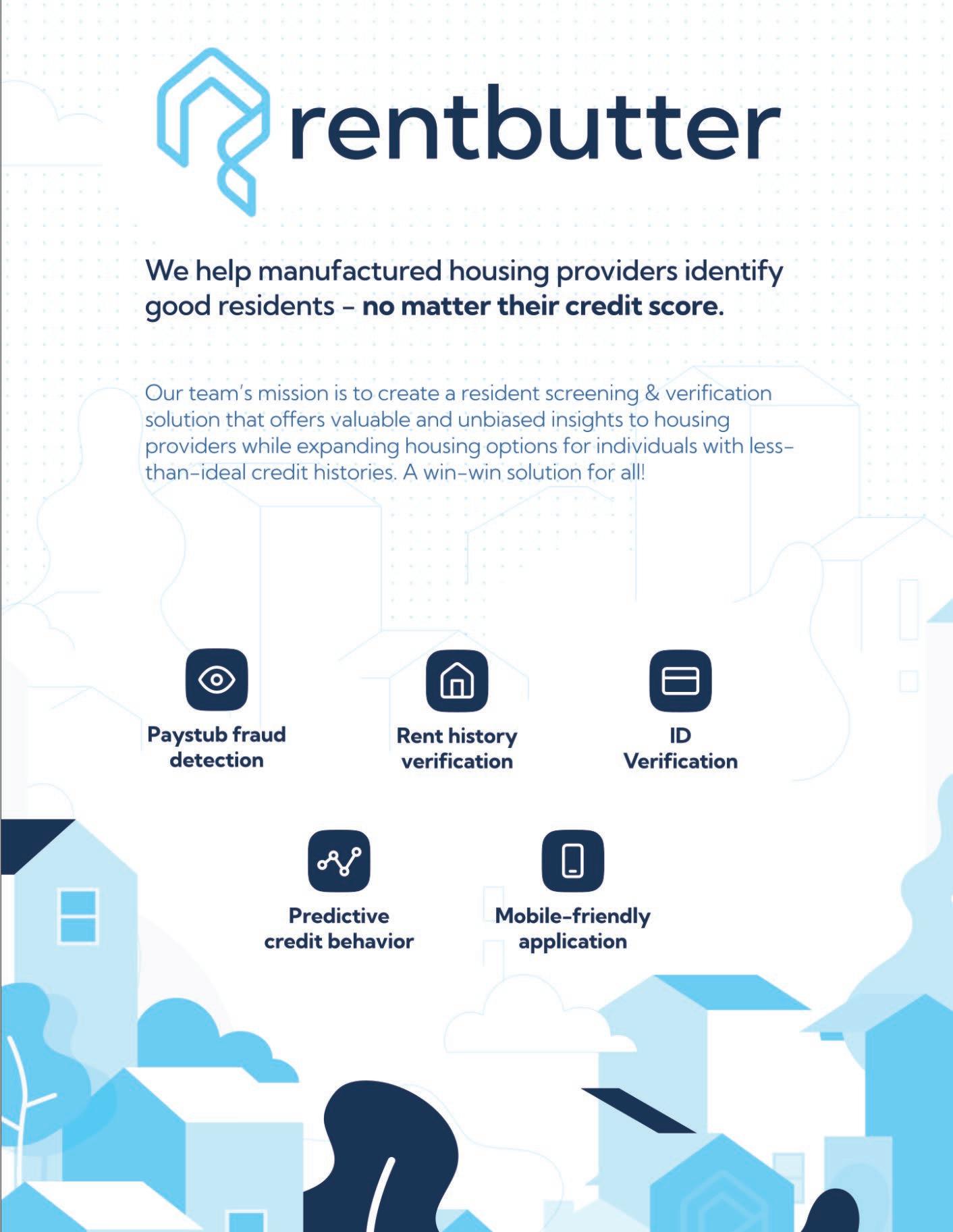
Why Inspect Raw Land and Dozens of Ways To Use It
By Due Diligence Partners

Build a Water Park, Lagoon Fishing, Therapy Horses For The Children, Whisky Bar, hooooooold up…
Before we get too excited here and reveal the real list below, let’s cover some basics
It’s not uncommon to get some land with your mobile home park (aka manufactured housing community) deal That vacant land could range from a narrow alley to over 100 acres And believe it or not, you could also end up with useless land that comes with extreme liability or a pot of gold post-closing if you don’t know how to perform due diligence on it
We’ll approach this from the standpoint of the investor and operator
From a buyer’s perspective (onsite DD):
To quote Reading Rainbow, “the more you read due diligence, the more things you will know”, is the best approach for vacant land before closing Do you have your protective armor ready for trekking through the woods? We are not joking much here, the only way you are going to find what’s hiding is by being geared up and doing a lot of pre reconnaissance prep work This is usually the case for larger areas of vacant land that is not cleared
Here are some pre reconnaissance tactics shared by our onsite team,
1. Know your encroachments beforehand, have them mapped out and printed out with waterproof casing We use county and GIS maps to determine if there are any lot or perimeter encroachments on the land Those different maps are then put in transparent casing incase bad weather hits
2. We use up to five different mapping programs to have different versions of the vacant land on hand This
provides us with different versions of the land including what the land looks like during different seasons, such as in the wintertime when there are no tree leaves
3. Survey in hand - know the easements and any landmarks prior to onsite We have found crazy utility easements on vacant land that would not be known unless studying the survey or trekking the land Note, only a complete Alta will note easements
4. Have a trekker that is covered head to toe or not allergic to Ivy and Oak, be ready for bad weather, wear waterproof boots, mosquito spray, sunscreen, and have gloves and something to hack with to get through brush and trees for thick jungle like areas
Now for boots on the ground,
1. Our onsite team first walks every foot of the perimeter first before checking to see what lurks inside.
2. Next, we decide on the best grid pattern to walk so that all the area is walked
3. What we’re looking for – hidden topography that may not be revealed by our drone topography map, liabilities (abandoned structures/boats/equipment/chemicals, underground structures/items, illegal activity, camps/squatting, debris dumps, drainage/canals/utilities not shown on any maps and recording any deferred maintenance items such as required debris clean up, clearing, and liability removal We have found over 100K in cost for minimum removal required many times! Cigarette boats, fire damaged mobile homes, non-documented neighbor’s septic, camps, tree house homes, swamps and blocked drainage are just a few interesting things we have found
4. Documenting everything is the last step We found pages of notes to not be very effective for the recording process Instead, we use a mobile checklist (that does not require
- 15 -
Why Inspect Raw Land and Dozens of Ways To Use It Cont.
an internet connection) that is preconfigured with every possible item to look When items are documented, our checklist requires that a picture or video be taken for certain items, to mark those items as properly completed These completed items are then imported into our onsite report If you do not have the luxury of custom onsite software, the next best option is to use some type of digital recording like Google sheets on the phone so that chicken scratch notes are not lost If you have inhouse help or are hiring someone to look at the land, having a person with experience is important but may not be as important as making sure the process they are following helps dummy proof the data capture
Here are a few liability notes, brought to you by Kurt Kelly, with Mobile Insurance Mobile Insurance is the largest provider of insurance products to the manufactured housing industry in the nation “Vacant land can come with a lot of large liability losses To name a few – drownings in small ponds (most popular), falls into abandoned systems, holes, mines, and other openings The good news – vacant land and park expansions can be insured reasonably along with the park ”
From an operator’s perspective: Congrats! You closed on the deal, now what do you do what that land?
We are assuming the following before belting out creative ways to use your land…
1. Your onsite process has revealed the zoning and land use perimeters for the vacant land, especially if it is on a different parcel(s) than the main property which may be zoned differently
2. If you are already familiar with the zoning and restrictions, you have pulled up the ‘permitted use’ chart (shown below) and studied it with vigor If you are not familiar with a ‘permitted use’ chart, you will need to Google the zoning code database The local zoning database is usually called “municode” which stands for municipality code This will be a searchable database, containing zoning types, along with a usability chart that will list ALL permitted uses for the land
3. Your land may be in a restricted or non-restricted nonzoned county area If it is in a non-zoned non-restricted area, then GREAT! You lucked out, go build a compound or a water park!
4. You are aware of the flood zone type and the likeliness that it will flood based on the topography and history.
5. Finally, that you are aware of any restrictions outside of local, state, and national code. Such as financing restrictions for institutional loans or refinancing. Note,
big loans often come with a lot of restrictions which can include land-locking your property to not allow for any alterations or improvements
Land use chart for permitted uses will look something like this…

Now that we got that boring stuff behind us, here are some ideas –
1. Park expansion: this may be more costly but if the market lot rent is over $350 and your city does not have a bad reputation for outrageous requirements and associated approval and permitting costs, then it could potentially be a gold mine
2. RV lots: lot development for RV lots are significantly less since sewer and electric infrastructure is less demanding for RVs compared to MH In fact, electrical infrastructure could cost a third to half as much as it does for MH It may also be acceptable to start with gravel roads and parking versus paved
3. Dry Storage: Could be for boats, RVs, and more Very low overhead Security fencing and lighting can be added Lower liability than other uses
4. Amenities: Add an amenity Depending on the amenity, cost could be low to high However, an amenity can put the property in a different asset class and result in higher rents
5. Storage: Could be built or dropped in We have seen shipping containers at a handful of parks Think about it, lower cost and not much maintenance for a shipping container One Park we visited offered three different sizes to choose from
6. Extra Parking: Very easy to add and low cost Different road materials, numbered parking signs, and security could be added providing extra parking as an amenity or extra fee per space
7. Satellite Tower: Satellite providers look for vacant land to lease Towers require that the radius be equal or larger than the tower being installed – incase it falls They will offer long term lease contracts for around 5 to 20 years but are also typically negotiable
- 16 -
Why Inspect Raw Land and Dozens of Ways To Use It
8. Wind or Solar farm It is estimated that by 2050, wind power will jump to over 400 GW versus the current 113 GW However, it may be highly unlikely that you have the right amount of space and location for this Solar may be more realistic and solar farms are popping up all over the place Negotiate free electric for your park too
9. Agriculture: A few options may be available for agricultural use If approved, you may get an Ag tax exemption for your land Note, you may have to plant something or buy a goat to qualify. You may also be able to lease the land to a farmer
10. Sell it!!!: It may be possible to sell vacant land even if it does not have road access. You may also grant road easement access to vacant land if it is possible for your road to access that land Obviously, when you grant a road easement, you are opening yourself up to having a neighbor drive through your property with WHATEVER they want Typically, it is not a difficult process to sell vacant land. That vacant land is resurveyed so that a new property line can be established When the land is sold, new metes and bounds and survey are used to identify and sell the new parcel If the land is already its own parcel, then great! As the assumptions already listed, if you are going down this route, you have already completed your due diligence to be certain that selling or changing the use of vacant land will not trigger anything PS, a lot of park owners have made some serious $$$ selling off vacant land pieces that were never a part of their valuation – Bonus money
11. Sell the trees: There is gold in them there trees(said with hillbilly accent). You may want to contact a local wood dealer or broker to assess the value of your tree portfolio, you may be surprised how much trees can be worth, especially in some areas Not only can you get paid for them, but there is no clearing cost to you
12. Lease Billboard space: This is a very underutilized option with low cost to build Many parks have fantastic locations on busy roads and highways Large cities or restrictive cities may have a billboard moratorium but the only way to find out is to call. We’ve seen billboard lease agreements that are $2K monthly - $24,000 00 for the year for one billboard This lease was a ten-year term that increases an additional 5% yearly
13. Community garden: This is a low-cost option that could encourage a lot of friendliness and good health
14. Build other stuff: Homes, tiny homes, condos, apartments, skyscrapers, rec center, etc
15. Flee Market: We haven’t seen this and no idea how this would work
16. Water Park: Terrible idea, insurance nightmare, what are you thinking?
17. Lagoon swimming and fishing: bad.
18. Therapy Horses for the children: NO, anything that encourages more unapproved animals and is an insurance and liability nightmare is not a good idea See our post about Animal Due Diligence!
19. Petting Zoo Amenity: NO, again, see above Other amenities may be a great idea
20. Dog Run: NO, see above However, you may be an owner that loves animals so much that the satisfaction of having a dog run will outweigh the potential additional animal issues incurred
21. Whisky Bar: Seriously? NO, while a bar could potentially produce more income than lot rent, this is likely not on the approved uses list and your renters may not be sober enough to pay rent
22. Clay shooting: NO
23. Drive in movie theater: that’s getting too creative
24. Do nothing: Do nothing and pay for taxes, insurance, maintenance and hope that nothing crazy ever happens on your land
25. Your addition? Add something to this list and we will quote you! Please let us know if you have any ideas to add to this list, interesting things you have seen that should be shared, or if there is any other due diligence topic you would like us to write about
We hope we answered the question of how to use raw land Thank you!


About the Author: Steve Edel, Partner at MHC Due Diligence Partners
Serial Entrepreneur | Founder of Tech and Real Estate Companies | Multiple Company INC 500 | Acquired 50 MHCs Across Multiple States | Speaker at Industry Events Like TMHA, TexCO, and MHI
Email: Steve@DueDiligencePartners.com
Questions?
Contact: Justin Gonzales, 512-651-9236, Justin@ DueDiligencePartners.com
Managing Partner at MHC Due Diligence Partners | Real Estate, Finance, and Manufacturing Expert | Team Growth and Performance Driven | Unparalleled Customer Satisfaction Advocate

- 17 -
Cont.
By Kurt Kelley President Mobile Insurance
THE LEGAL CORNER
FALLEN
TREE LIABILITY? Add This Clause to Your Lease…
I like trees. You like trees. Residents like trees. We all like the birds and animals that make their homes in the trees. Trees provide shade in the Summer and wind protection in the Winter Trees improve a community’s livability
But tree limbs and trunks eventually fall Community owners can and should purge their dead trees and remove those that are clearly dangerous to property and people But community owners can’t control the weather And wind, lightning, and heavy rains can bring trees down on cars, homes, and people
To reduce your community operating risk, consider adding tree proximity assumption of risk language to your tenant leases This won’t give you full legal protection, but it adds some in most states Here’s an example:
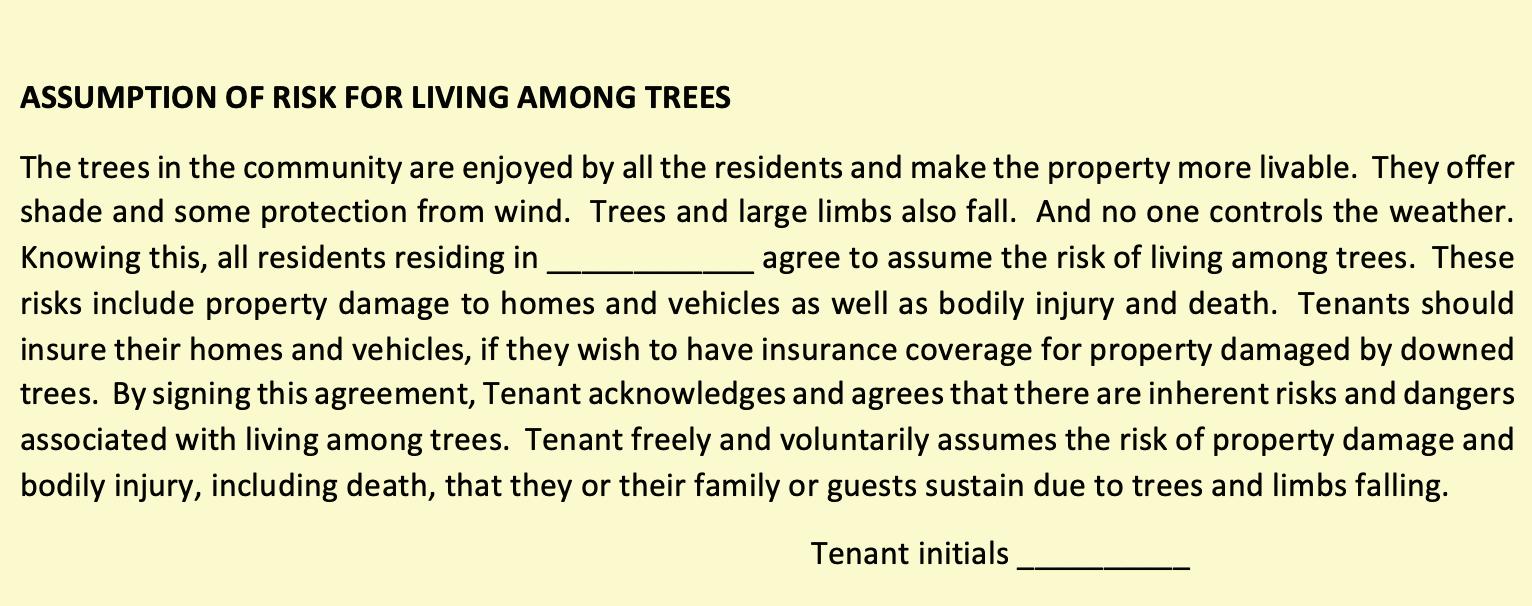

President of Mobile Insurance, an agency specializing in insurance for manufactured home communities and retailers. Member of numerous insurance companies’ policy development and advisory teams. One of largest manufactured home specialty agencies in the country. 2017- Present, Founder and Publisher of the Manufactured Housing Review, an industry publication dedicated to Manufactured Home Industry professionals. www.manufacturedhousingreview.com
Kurt D. Kelley, J.D. President, Mobile Insurance Kurt@MobileAgency.com www.mobileagency.com

- 18 -
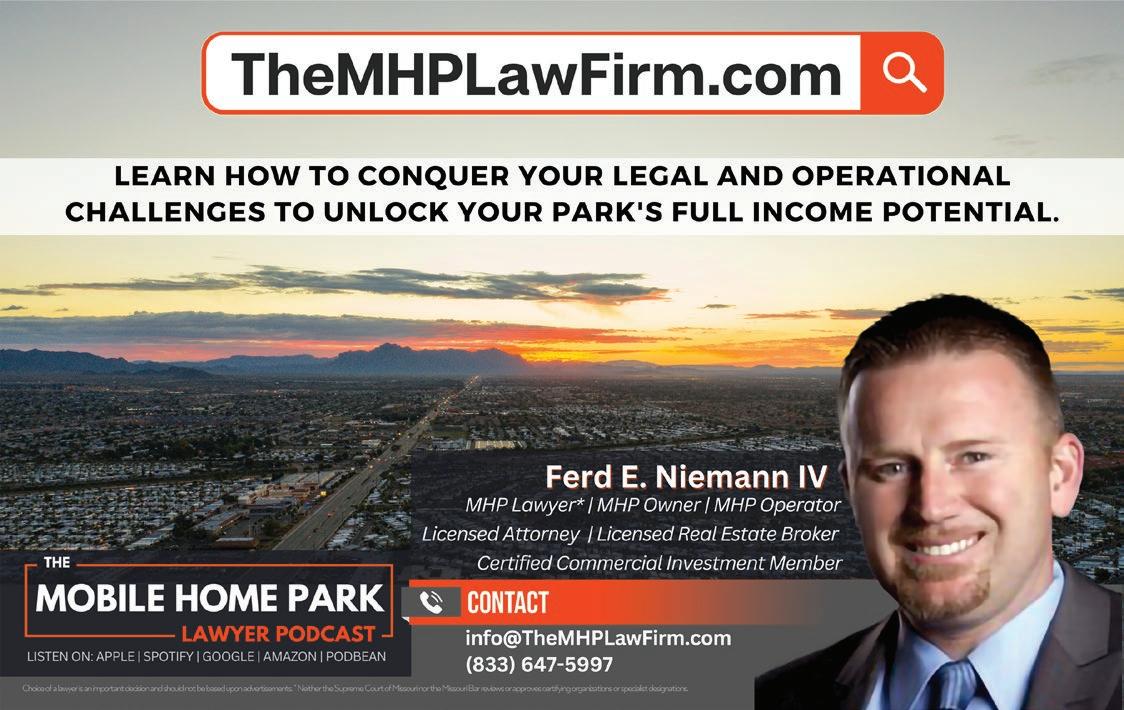

- 19 -
A Checklist to Evaluate a Manufactured Home Community
How do you evaluate the reputation of a manufactured home community? A checklist can ensure you cover all the bases

Here’s a checklist to honestly evaluate the reputation of a mobile or manufactured home community:
1. Years in business - longevity counts.
Hames Homes has been a family-owned business since 1969 Only ethical, reputable companies stay in business for nearly 55 years
2. Concerns from homeowners – are they handled correctly?
Hames Homes, LLC is an A+ rated, accredited member of the Better Business Bureau That doesn’t mean our homeowners have never complained It means that when they do, we solve the problem right the first time.
3. State licensure – is the community appropriately licensed?
Hames Homes, LLC is a fully licensed manufactured home retailer in the State of Iowa. We also have Iowa-certified manufactured home installers on our experienced service team. Our in-house financing company, Circle Finance LLC, is licensed and registered with the nationwide mortgage licensing system, NMLS#366020 From top to bottom, our team is properly licensed
By Barbara Hames-Bryant
4. Website transparency – does the community openly provide the facts?
Prices, pictures, and features for all our new and used mobile homes are listed on our website We also provide an abundance of resource materials, from financing applications to community rules, to an easy contact form Some material is even available in Spanish We also have a great monthly newsletter to keep current and potential residents informed
5. Manufactured home communities’ service department – is it dedicated or out-sourced?
Our dedicated in-house service department repairs, refurbishes, and installs all the manufactured homes we sell Other mobile and manufactured home communities may use subcontractors who may not have the time or the knowledge (or license!) to do a good job or complete the work in a timely manner
6. Local Involvement – integrated in the community or just passing through?
The Hames family gives back to the communities in which we do business We have an on-site food pantry open to the public We also frequently donate and sponsor other various local causes
In addition, we are long-term, active members of the Iowa Manufactured Housing Association to ensure our product remains a high quality, affordable option in the state of Iowa
7. What do current residents say?

Barbara Hames-Bryant, President NMLS #366201 5410 Wabash St. SW Cedar Rapids, IA 52404 (319) 377-4863
Barbara Hames-Bryant is President of Hames Homes, a three-generation family business located in Cedar Rapids, Iowa. HamesThe Homes People® has been a trusted housing brand in Eastern Iowa since 1969. In addition to manufactured home sales and two premier manufactured home communities, the Hames family operates a finance company and insurance agency.
- 20 -
Analysis of AB 2778 and AB 2539 – Victory in Defeat
As you may be aware, the Mobilehome industry recently achieved two significant legislative victories. The proactive efforts in Sacramento led to the successful defeat of AB 2778 which proposed mobile home park rent control and AB 2539 which proposed a right of first refusal for Park residents These legislative proposals posed substantial risks to park owners’ property rights and could have imposed severe economic challenges on park owners and operators

Presently, the Mobilehome Residency Law limits the ability of “qualified mobilehome park[s],” those located between and governed by two or more jurisdictions, from raising the gross rental rent by more than 3% plus the percentage change in the cost of living, or 5%, whichever is lower Further, existing law precludes a qualified Park from increasing the rent more than two times in a 12-month period for any resident with a tenancy in the park for more than 12 months A “tenancy” is defined by the MRL as the right of a homeowner to use a site within a mobilehome park on which to locate, maintain, and occupy a mobilehome
AB 2778 would have extended this rent control scheme beyond qualified mobilehome parks to all mobilehome parks in the State, with very limited exceptions. Specifically, AB 2778 would have prohibited management from increasing the gross rental rate for a tenancy for a mobilehome space by more than 3% plus the percentage change in the cost of living, as defined, or 5%, whichever is lower, of the lowest gross rental rate charged for a tenancy at any time during the 12 months prior to the effective date of the increase, as specified. AB 2778 would have also prohibited management from increasing the gross rental rate for a tenancy in more than 2 increments over a 12-month period after the tenant maintains the tenancy over a 12-month period
By Ryan D Jones, Associate Attorney
This would effectively impose rent control state-wide and drastically impact the value of your mobilehome park and impose drastic economic burdens on the ongoing wellbeing of park owners and managers
Further, under the MRL, owners of a mobilehome park entering into a written listing agreement with a licensed real estate broker for the sale of their park or who offers to sell the mobilehome park to any party to provide written notice of the owner’s intention to sell to specified members of a resident organization formed by homeowners for purposes of converting the mobilehome park to condominium or stock cooperative ownership interests and for purchasing the mobilehome park The MRL requires the owner to provide this notice not less than 30 days nor more than one year before entering into the listing agreement or offering to sell the mobilehome park Finally, the MRL prohibits an offer to sell a park from being construed as an offer unless it is initiated by the park owner or their agent There are various exceptions to this notice requirement, including that no notice is required unless the resident organization has first furnished the park owner or park manager with a written notice of the name and address of the president, secretary, and treasurer of the resident organization, as specified.
AB 2539 would have required the owner to provide the abovedescribed notice if they accepted an offer from any buyer The bill would have also required the owner to provide the abovedescribed notice to all residents of the mobilehome park and the Department of Housing and Community Development not less than 120 days nor more than one year before entering into the listing agreement or offering to sell the mobilehome park
More importantly, AB 2539 would have granted the resident organization a right of first refusal to the mobilehome park and given them 6 months 120 days from the time they received the above-described notice to make an offer The bill would have required the owner to engage in good faith negotiations, as defined, with the resident organization if they are interested in purchasing the park and prohibit the owner from negotiating with or accepting an offer from another party until the abovedescribed 6-month 120-day right of first refusal time period has elapsed The bill would remove the above-described exceptions to the notice requirement and would remove the prohibition on an offer to sell a park from being construed as an offer unless it is initiated by the park owner or their agent
This would in effect drastically reduce park owner’s right to alienate their property as they see fit and hand over that right to the residents of the park with limited exceptions
- 21 -
Photo courtesy of The Epoch Times
Analysis of AB 2778 and AB 2539 – Victory in Defeat Cont.

Despite facing a legislature with a strong progressive inclination, diligent efforts and strategic engagement prevailed This success underscores the credibility and influence our advocates hold within the State Capitol. It also demonstrates that the manufactured housing industry must be ever-vigilant to meet bills seeking to limit, dilute, or terminate MHC property rights
We owe tremendous gratitude to WMA’s legislative lobbyists and CMPA’s legislative advocates Their unwavering dedication
and thorough approach were instrumental in achieving these significant victories.
These wins demonstrate the critical impact of unified action and well-informed advocacy We are proud of our MHC team’s achievements and their unwavering commitment to safeguarding MHC property rights in California

Ryan D. Jones was admitted to the California State Bar in December of 2014, and since that time focused his practice on business, real estate, and construction law. In his tenure, Ryan has prosecuted and defended all manners of complex litigation, including mortgage disputes, partnership disagreements, trade secret litigation, construction disputes, foreclosure and release of mechanic’s liens, and landowner and landlord/tenant disputes. Ryan has substantial experience in all phases of litigation, including law and motion, discovery, and jury trial. Ryan also has experience with business and real estate transactional matters, including forming business organizations, drafting partnership agreements, and reviewing and analyzing real estate purchase agreements.
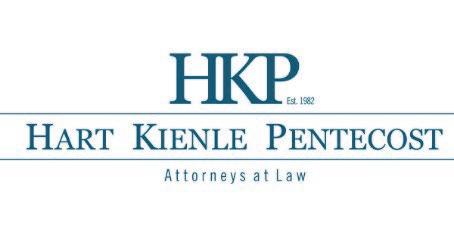



- 22 -
Register online msmmha.com/convention July 27-29, 2024 Perdido Beach Resort Orange Beach, AL
Photo courtesy of Vigilant Wealth Management
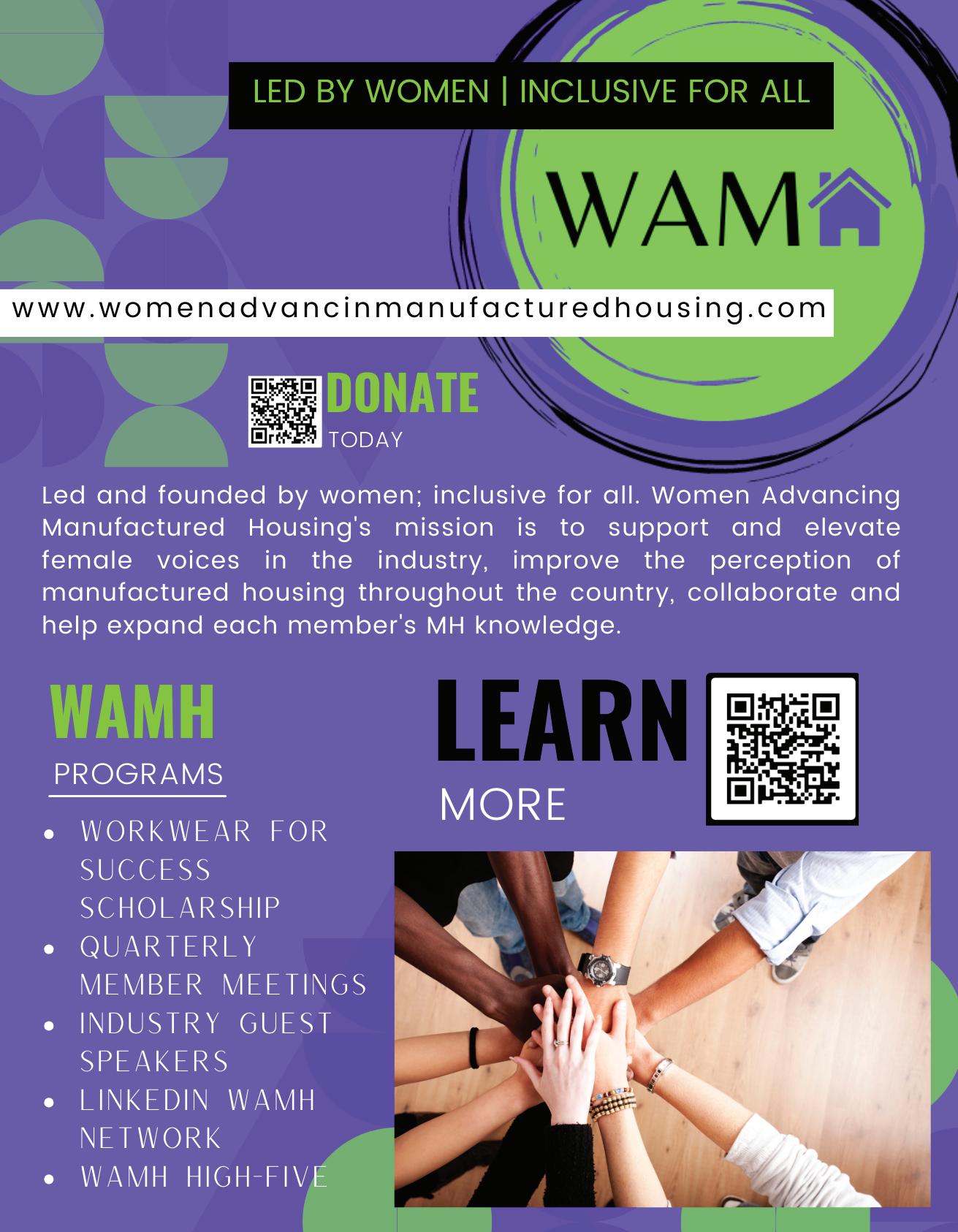
When Squatters Strike: Why Squatting Is On the Rise—and
So Hard To Solve
Atlanta attorney David Metzger recently got a call from a client in a tricky situation: She’d gotten engaged, moved in with her fiancé, and decided to rent out her house in Dekalb County

The day her home was listed, moving trucks arrived and a woman moved in with two kids, one a baby
The problem? The house had not yet been rented out
Metzger’s client, who’d heard about the moving trucks from her former neighbor, had her property manager call the police When they stopped by to check out the situation, the “renter” presented them with a fake lease, with a fake electronic signature
Presuming this “lease” was legit, the police left
Metzger and his client spent three months legally wrangling before they were able to remove the squatter in February 2024 (which he says was a relatively short amount of time)
Yet although the mother was removed by the sheriff’s department, Metzger is not aware of any criminal charges brought against her In another case, he says that his client’s squatters were given 15 minutes to remove all their belongings and then allowed to drive off in their car
Such stories—of squatters taking over vacant properties, costing homeowners thousands to evict—are becoming shockingly common today
“This is a real problem,” says Metzger, an attorney at Williams Teusink “It’s not getting the attention it deserves ” Why squatting is on the rise.
By Kiri Blakeley
When Metzger began practicing in 2011, squatter cases were “very rare ” But starting in 2023, there has been an “explosion” of them
“People came out of COVID lockdowns to find out rents were no longer $800 a month, but $1,800,” he says “They’d say, ‘I can’t handle that ’”
Metzger adds that while squatting used to exist mostly in low-end properties and neighborhoods, he is now seeing it in “bigger, fancier” properties, including in new construction
According to the National Rental Home Council, there are at least 1,200 properties currently occupied by squatters in the Atlanta area
Flash Shelton, founder of Squatterhunters com, which can be retained to clear a home of a squatter, says the situation has reached epidemic levels in Atlanta
Metzger agrees that the law needs to take squatting more seriously
“The people doing this know there’s no legal consequences,” he says “They’re not likely to be charged with anything ”
Once police are presented with a “lease”—even a forged one— it is considered a civil, not criminal, matter, and they leave
“The squatters know this,” says Metzger

A new piece of proposed state legislation—HB1017, the Georgia Squatter Reform Act—would make it easier for owners to remove squatters by focusing on the illegality of fake leases
Metzger, Shelton, and other property law advocates say this is a good first step.
- 24 -
When Squatters Strike: Why Squatting Is On the Rise—and
So Hard To Solve
“It’s frustrating because police are very hands-off,” Metzger says, “even though there is no such thing as squatters’ rights ”
How to get rid of squatters
To get squatters out of a property, Metzger uses a little-known Georgia state “intruder removal” statute that predates the Civil War
“Most people don’t know about it,” he says Under this statute, the property owner can execute an affidavit setting forth that the squatter is, in fact, an illegal intruder Unless the squatter has a counter-affidavit, this gives the sheriff’s office the right to remove the squatter
But it’s not always that easy. How a sheriff’s office responds to a squatter case can vary greatly by county And squatters are geniuses at finding legal loopholes and how to drag out the process Typical eviction methods can take a year or longer Meanwhile, the property owner is on the hook for loss of income and legal bills
The best way to not have to deal with a squatter is prevention
According to Metzger, the vast majority of squatters aren’t moving in when homeowners are away on a two-week vacation They’re doing it when a property is listed for rent They scour real estate listings to learn which properties are sitting empty
Since squatters target vacant properties, anything an owner can do to make a property look occupied would go a long way toward discouraging intruders Photos in a listing could include a person, or even a dog (perhaps a big, don’t-messwith-me-looking dog)
“Try to have a camera and security system in place,” says Metzger
Normally, when police show up to confront a squatter, and the person claims they have a lease, there is no way to prove the person broke in However, camera footage can do that This would generally move the case from a civil one to a much more enforceable criminal one
Coldwell Banker agent Cara Ameer in Florida agrees that cameras are a deterrent but warns to make sure they are placed securely, or squatters can simply block or remove them
“We’ve all seen those stories of people removing Ring doorbells,” she says She also suggests using timed or motiontriggered lighting to make a property seem occupied
Metzger also suggests alerting neighbors that your property is vacant and asking them to get in touch if they see any unusual activity
And never leave a key in a key box, which can be broken into Leave it with a property manager
If a squatter gets in? Do call the police but do not try to handle the squatter yourself, experts warn
“Unfortunately, it is a legal game to play and you want to comply with what is required by the law to ensure a successful outcome,” says Ameer “Don’t confront them or try to turn off utilities ”
With rents at all-time highs and little to no legal repercussions for the intruders, the squatting crisis is likely to get worse before it gets better
“It can’t stay this way,” Metzger says “Something has got to change ”

Kiri Blakeley is a writer in Brooklyn who has written for Forbes, The Stir, Daily Mail, Marie Claire, and others.

- 25 -
Cont.
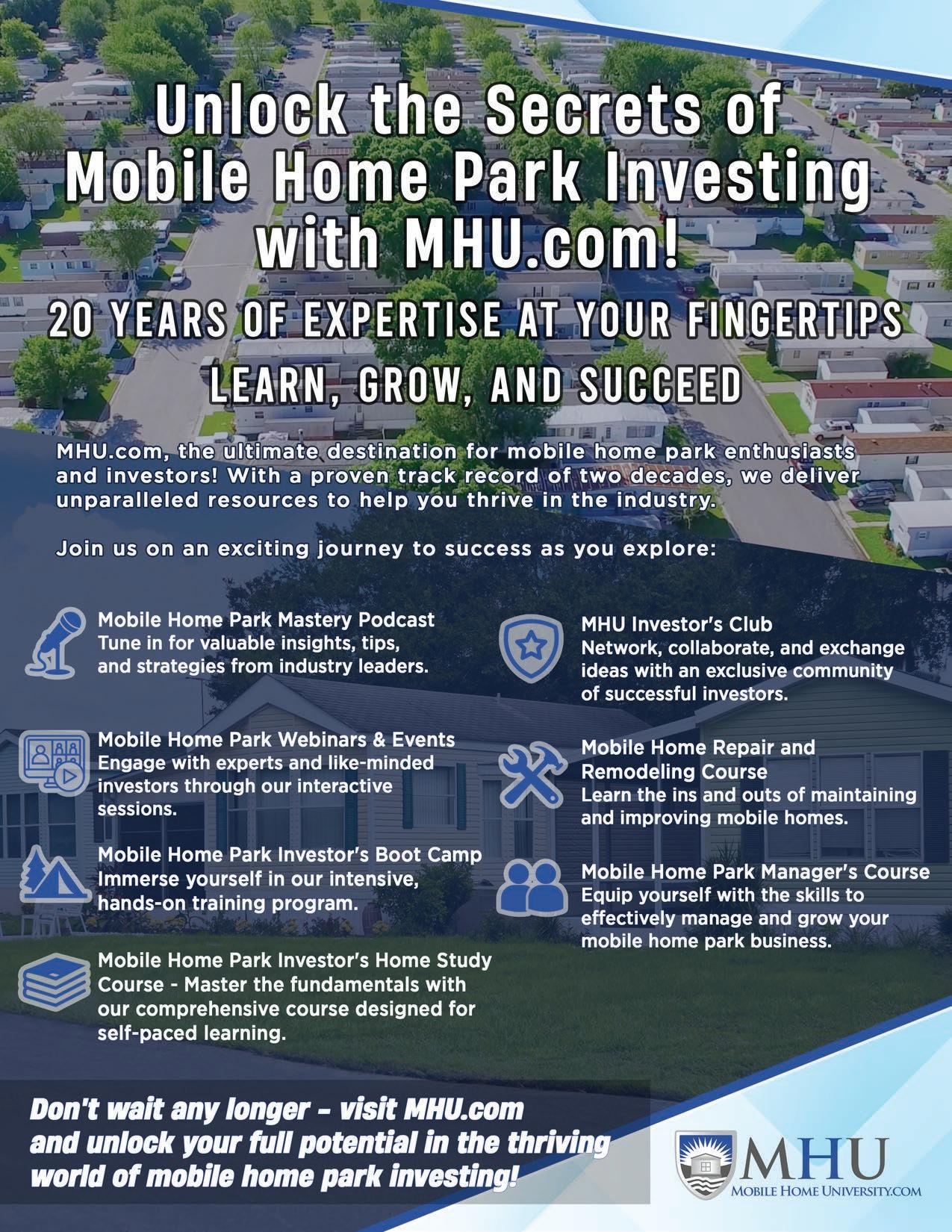
Exploring Investment Potential in RV Parks

In the realm of commercial real estate, RV parks stand out as unique and highly profitable investment opportunities. These parks cater to the growing demand for recreational vehicle travel and accommodation, offering a range of amenities and services to travelers As commercial real estate investors seek diverse portfolios, RV parks present compelling advantages worth exploring
Understanding RV Parks in Commercial Real Estate: RV parks, also known as campgrounds or RV resorts, are designated areas equipped to accommodate recreational vehicles (RVs) for short-term stays These parks vary in size, amenities, and target clientele, ranging from basic facilities to luxury resorts with premium services
Key features of RV parks include:
• Parking Spaces: RV parks provide designated spaces equipped with hookups for water, electricity, and sewage disposal, accommodating RVs of various sizes
• Amenities: Depending on their scale and target market, RV parks offer amenities such as laundry facilities, restrooms, showers, Wi-Fi access, recreational areas, swimming pools, and convenience stores
• Location: The location plays a crucial role in attracting visitors, with many parks situated near tourist destinations, national parks, beaches, or scenic areas
• Revenue Streams: RV parks generate income through nightly or weekly rental fees, as well as additional services like equipment rentals, laundry, and vending
Benefits of Investing in RV Parks:
• Steady Cash Flow: RV parks offer consistent income streams, as travelers continuously seek affordable and convenient accommodation options
• Resilience in Economic Downturns: During economic downturns, RV travel often becomes more appealing as a cost-effective vacation option, providing stability to investors
• Low Maintenance Costs: Compared to other commercial properties, RV parks typically have lower maintenance expenses, as they require fewer structural repairs and renovations
Terrydale Capital
• Scalability: Investors can scale their RV park portfolios by acquiring additional parks or expanding existing ones, tapping into diverse market segments and geographical locations
• Tax Benefits: Like other commercial real estate investments, RV parks offer tax advantages, including depreciation deductions and potential eligibility for 1031 exchanges
• Community and Lifestyle Appeal: RV parks foster a sense of community among travelers, offering a unique lifestyle experience that attracts repeat visitors
Strategies for Commercial Real Estate Investors:
• Market Research: Conduct thorough market research to identify high-demand locations with limited competition, considering factors such as tourist attractions, population demographics, and travel trends
• Due Diligence: Perform comprehensive due diligence on potential RV park acquisitions, evaluating factors such as occupancy rates, revenue projections, property condition, and regulatory compliance
• Value-Add Opportunities: Look for value-add opportunities to enhance the appeal and profitability of existing RV parks, such as upgrading amenities, improving infrastructure, or implementing eco-friendly initiatives
• Diversification: Incorporate RV parks into a diversified commercial real estate portfolio to mitigate risks and capitalize on various market dynamics and economic cycles
• Professional Management: Consider outsourcing property management to experienced professionals with expertise in RV park operations, marketing, and customer service to maximize efficiency and profitability.
In Conclusion
RV parks represent a compelling niche within the commercial real estate landscape, offering investors the opportunity to generate steady income, diversify their portfolios, and tap into the growing demand for outdoor recreation and travel By leveraging strategic investment approaches and embracing the unique appeal of RV park properties, commercial real estate investors can unlock significant value and long-term financial rewards. When you need the right team to guide you to success with your RV investment, contact us at Terrydale Capital today
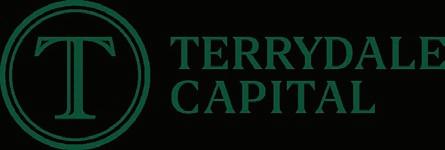
- 27 -
Very Bad Boys of Manufactured Housing
Having a cozy relationship with The Outfit doesn’t always work to your advantage Take my friend Joe Testa for example One look at him and you knew he had dough You might have even thought he was connected. He wore suits that cost a thousand bucks He had a limo and driver and a gorgeous ninety-foot yacht on Lake Michigan
Joe was a real estate genius who’d made millions and millions in property deals He owned several fancy mobile home parks in the Midwest and some resort development in Florida
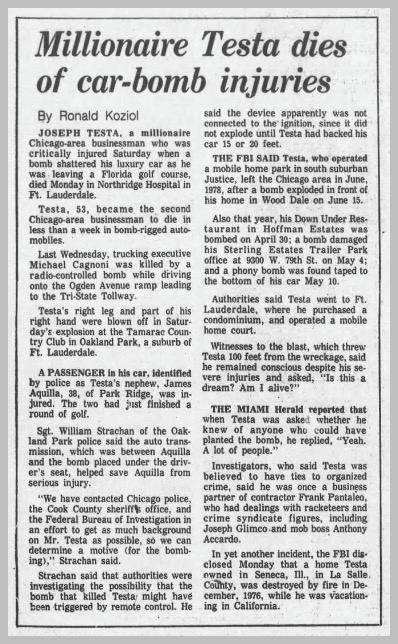
One of these ‘parks’ was Sterling Estates on the South side of Chicago There are all sorts of urban legends out there, to this day, how Joe eluded a particular mobster intent on killing him, by taking refuge in mobile homes owned by his tenants But, in the end, that didn’t work well
“Joe was driving down the street one night, and he had his wife in the car And here come these guys, they pull up by Joe, and boom, boom, boom, they open fire on Joe and his wife. They put five deer slugs right through Joe’s Lincoln.
By George Allen
Joe was out of town when they blew up his house It was a beautiful, expensive home in the suburbs, and it was totally destroyed ”
Shortly after that, Joe had a heart attack, which sidelined him a bit Though he did make it to Las Vegas one last time “We hit the town every night, and during the day we found some girls and went out on the boat We got half a mile out and everybody got naked – that was Joe Sun and fun Work hard, play hard…
The end? “According to the police report, it was around noon on June 27, 1981, when Joe put the key in the ignition of his blue Lincoln Town car The explosion blew the windows out and blasted the hubcaps right off the car It also blew off Joe’s leg and hand Joe died soon thereafter
And the story of Sterling Estates, and other Testa-owned land lease communities, and how they became part of other property portfolios, continued after Joey’s death
Probably the most notorious and tragic manufactured home community-related story has to do with short-lived GEF Communities (a company I worked for briefly), headquartered in Greenwood, IN During 1979, Gian Luigi Ferri came to town to buy four ‘mobile home parks’ he intended to become the centerpiece of a property portfolio destined to be the ‘Holiday Inn’ of manufactured housing Things did not go well from the start A major unintentional accounting error, on the part of the buyer’s due diligence team – but not discovered until after ‘closing’ the transaction, led to dissolution of the fledgling company, and rapid sale of its’ portfolio of four communities
Fourteen years later, on 1 July 1993, Gian Luigi Ferri, carrying three firearms (two TEC-9s & one 45 cal. automatic handgun), entered the Pettit & Martin law firm on the 34th floor of a high-rise office building in downtown San Francisco. There he murdered eight individuals and wounded six others, both attorneys and clients As police closed in on him, he committed suicide During the investigation after this mass shooting, police shared the content of a letter found on his body that described business deals – a failed land development deal in Las Vegas and mobile home parks in Indiana that may have been the motivation behind his actions
Now, 27 years after the 101 California Street shooting, the four land lease communities are owned by other portfolio firms, most if not all of which, have no idea of this tragic episode in manufactured housing history, as it relates to their properties
- 28 -
Very Bad Boys of Manufactured Housing Cont.

Then there’s John Robinson, a k a John Osborne, and the Slavemaster. This sordid tale is told in the non-fiction crime tome titled ANYONE YOU WANT ME TO BE, ‘a True Story of Sex and Death on the Internet’. Briefly put, John Robinson was a smart, generally unemployed middle-aged con man, embezzler, kidnapper and forger who, when not in prison (1987-1993), lived in Midwest mobile home parks his wife Nancy managed
“His wife was now managing a mobile home park called Southfork in Belton, Missouri, a Kansas City suburb to the south. The park promoted a theme that reflected the huge TV hit Dallas from several years earlier ” Later, Santa Barbara Estates
My brief contact with Robinson occurred in 1995, when he launched “Specialty Publications, which featured a trade magazine, Manufactured Modular Living, about the mobile home industry ” He, at the time, wanted to merge his new pub with one of the business newsletters I was penning and distributing to land lease community owners/operators nationwide Not interested
What was really going on at the time?
“Nobody who lived next to Robinson- and quite possibly nobody who lived with him or spent time in his home –realized that each morning he waited until Nancy had gone to work at 8:30AM, before turning on at least one computer (he had three desktops and two laptops) Then he went to his real job, which didn’t have much to do with selling ad space for Manufactured Modular Living He got on line and surfed chat rooms and Web sites, establishing new relationships with women he’d never seen ” Osborne’s misadventures earned him the nefarious title of being the internet’s first serial killer
Turns out he’d befriended women from many different backgrounds, race, and sexual preference – including S&M. Without going into detail here, suffice it to say he was convicted of murdering three women, maybe two more Two of the three known victims of this serial killer were stuffed into plastic 55-gallon drums
On the trial’s third day a local radio personality (gave) away T-shirts They were emblazoned with the words: ‘John E

In the end, Robinson was found guilty of all charges, to be As of fall 2024 he is on death row in a Kansas prison
And there are more bad boys of manufactured housing During my 40+ year career in manufactured housing and land lease communities, I’ve known income tax evaders who’ve served ‘hard time’ in federal prisons, others who convicted of fraud, even portfolio heads who were sued successfully by disgruntled limited investors But we’ll stop the recitation here
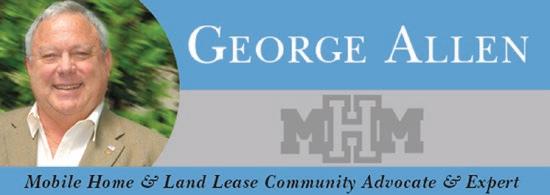
- 29 -
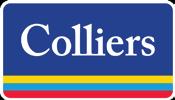
MANUFACTURED HOUSING & RV GROUP

Michael J. Nissley
National MHRV Director
+1 561 479 1588 mike.nissley@colliers.com

Bruce Nell, MAI, MRICS, AI-GRS Valuation & Advisory
+1 614 437 4687 bruce.nell@colliers.com
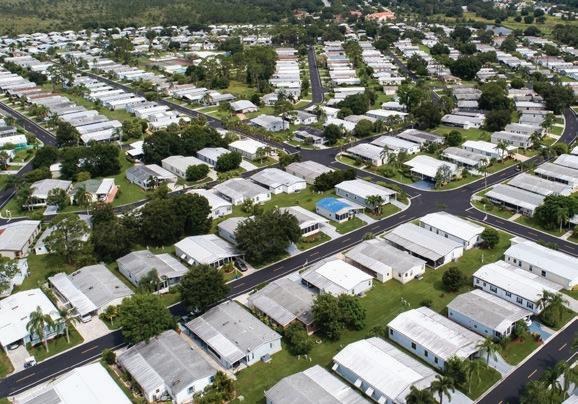
Maximize Your Park Value the market is seeing record breaking prices for manufactured home properties and RV resorts as well as never- before seen deal velocity. We will help you maximize in the current market.
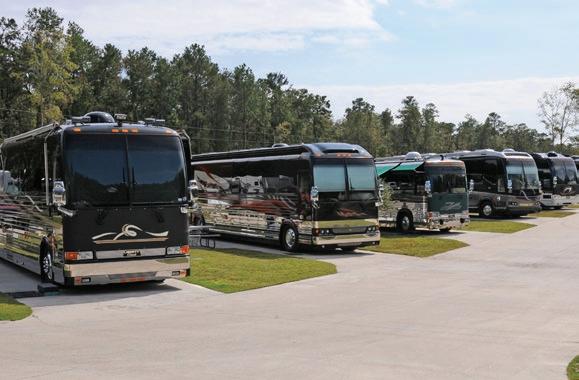
$400 Billion of MHRV Appraisals each year the Valuation & Advisory team appraises more than 1,500 manufactured home communities ranging from single to large multi-state portfolios.
The MHRV Team is a culmination of the most established and respected experts in the Industry. Most notably, Mike Nissley and Bruce Nell who have been in the MHRV space for decades. Mike is considered one of the top brokers in the space and has assisted in closing more than $100B in transactions.
Bruce Nell is a best in class appraiser in the asset class given his penetration into the market early on and as appraised more than $700B worth of assets with $400B+ specifically in the MHRV space.
Both have established relationship spanning decades in the field and will bring a level of professionalism and incredible network that isn’t accessible by other firms.
This Senior-level team is supported by a strong roster of professionals that have been in Commercial Real Estate for 30+ years with institutional experience with banks and private equity groups. This ensures streamlined execution and best in class service to the team.
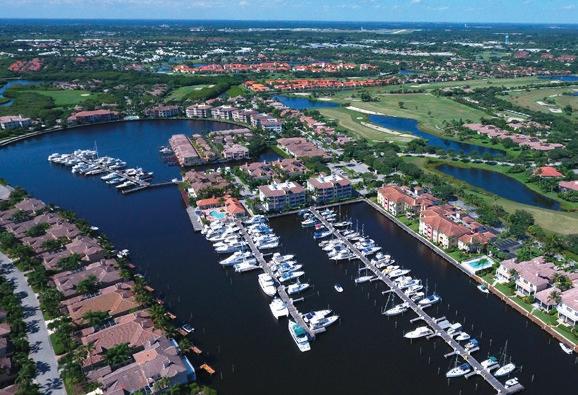
50+ Years Experience specifically in the MHRV asset class and many of our team members are MH & RV Park owners and property managers themselves.
Off Market
Opportunities we have a wealth of off market properties that are ideal opportunities for 1031 buyers to acquire.
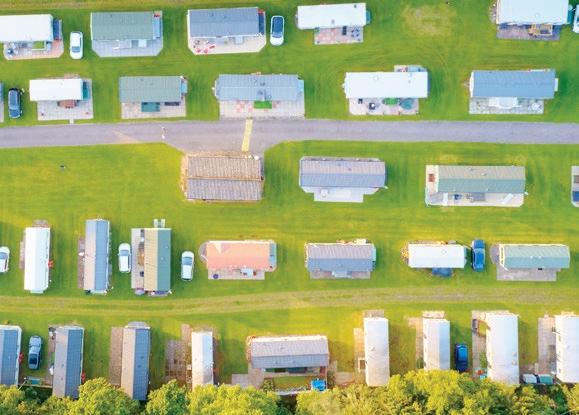
30+
Years of Institutional Experience with banks & private equity groups.
Accelerating success.
Court Ruling Advances MHI and TMHA Case Against DOE

This week MHI, along with the Texas Manufactured Housing Association (“TMHA”), scored a victory for the industry that allows for continued efforts to challenge DOE’s Energy Conservation Standards On May 1, 2024, the Federal District Court for the Western District of Texas issued an Order granting in part and denying in part the Department of Energy’s (“DOE”) Motion to Dismiss
When MHI and TMHA initially brought this suit against the DOE, they challenged DOE’s May 2022 energy efficiency standards After publishing the Enforcement Notice of Proposed Rulemaking, DOE filed a motion to dismiss with the Court seeking to dismiss all of MHI’s and TMHA’s claims arguing that the Court should wait until the DOE has finished its enforcement rulemaking process before deciding the claims The Court disagreed with the DOE’s argument and stated that “waiting until a new compliance date to bring this suit constitutes a sufficient hardship for the manufactured housing industry ”
MHI and TMHA argued, and the Court agreed, that their claims are fit to be decided because, regardless of any adoption by the DOE on enforcement rules, MHI and TMHA’s challenges are to the underlying Energy Rule standards In the Order, the Court stated, “The Court will also not benefit from further factual development on the majority of the issues because many of Plaintiffs’ issues with the Standards Rule will not be resolved or further informed by the DOE’s additional enforcement rulemaking ” The Court further held that, despite DOE’s arguments, MHI’s and TMHA’s claims that DOE violated its statutory mandate to consult with HUD in promulgating the Energy Rule will not be impacted by any future consultation with HUD on the Enforcement Rule
By MHAO, Manufactured Housing Association of Oklahoma
While the Court dismissed MHI’s and TMHA’s claims that relate to the DOE’s failure to consider enforcement costs, the Court is allowing all other remaining claims to survive and noted that MHI and TMHA can amend their complaint after the DOE has completed its enforcement rulemaking process This ruling is a positive step forward for the manufactured housing industry’s challenge to the DOE energy standards
March Economic Report: Positive Growth Continues
In March 2024, 8,447 new manufactured homes were produced, marking a 1 1% month-over-month increase from February and a 10 5% year-over-year increase compared to March 2023
There were 8,464 shipments in March 2024, which is 10 4% higher than the same month a year ago Single-section shipments increased by 11 7%, while multi-section shipments rose by 9 4%
Regionally, the industry experienced year-over-year growth in shipments in the south central and southeastern parts of the United States. In East South Central (AL, KY, NS, and TN), shipments increased by 48 6% compared to March 2023, and, in West South Central (AR, LA, OK, and TX), they grew by 22 8% Shipments in the South Atlantic (DE, DC, FL, GA, MD, NC, SC, VA, WV) increased by 20 6% MHI members can view the full report on ManufacturedHousing org
Biden Vetoes Joint Employer CRA
On May 3, President Biden vetoed H J Res 98, a Congressional Review Act resolution to nullify the National Labor Relations Board (NLRB)’s joint employer final rule, despite the resolution passing the House and Senate on a bipartisan basis earlier this year The administration claimed that “without the NLRB’s rule, companies could more easily avoid liability simply by manipulating corporate structure, like hiding behind subcontractors or staffing agencies.”
MHI and its business coalition had raised concerns regarding the impact the NLRB’s rule would have on small business and franchisers as the rule expanded the definition of agency in law This advocacy has helped bring about the creation of H J Res 98
Later this week, the House is expected to consider a veto message to accompany the resolution
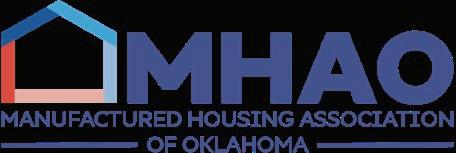
- 31 -
Photo courtesy of Wrightslaw Way
Seize Opportunities to Appeal Property Tax Bills
The Great Recession, from December 2007 to June 2009, was the longest recession since World War II It was also the deepest, with real gross domestic product (GDP) plummeting 4 3 percent from a peak in 2007 to its trough in 2009
By Molly Phelan, Esq
as it appeared in the Spring issue of NAIOP Development magazine
the property makeup is 30 percent, or $24 9 billion in assessed value. The office share of the total tax levy is $5.0 billion.
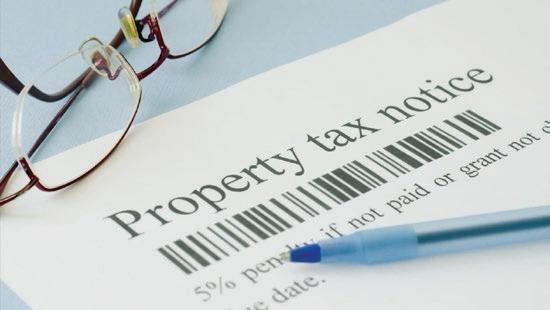
Entering that recession, unemployment was at an unalarming
5 0 percent, which is on par with historical averages, and interest rates hovered around 6 percent The roots of the recession lurked at the intersection of risky subprime mortgages and the repeal of the Glass-Steagall Act, which allowed for the megamergers of banks and brokerages to escalate
And here we are in January 2024, looking down a steep market slope On the bright side, we are in a more advantageous position than at the beginning of the Great Recession GDP was a respectable $25 46 trillion in 2022, up 19 percent from $21 38 trillion in 2019 Unemployment is at 3 7 percent, and values in the single-family housing market are increasing again, in part due to a lack of supply
The investors standing on unstable ground this time around are those heavily leveraged in major metropolitan markets, such as New York, Chicago, and San Francisco, or other municipalities that rely on office values. (Think suburban office markets.) The sharp increase in interest rates under the Federal Reserve’s tightening monetary policy, and the extreme drop in demand for commercial office space that accelerated during the pandemic, will have significant ramifications on all property types.
Dire developments
What ramifications? Assume a hypothetical “Metro City” that, like most major markets, has a tax base with 75 percent of its independent parcels classified as residential, and 25 percent as commercial real estate However, the assessment values are strongly weighted on the commercial properties, with 30 percent of the entire assessment value born by office properties.
The municipality has a total tax levy of $16 7 billion and overall assessed property value of $83.1 billion. The office portion of
Now assume that the city’s overall office market value collapses by 50 percent This leaves Metro City with a $2 5 billion deficit – not a small number. To recapture that $2.5 billion, the city must increase its tax rate by 15 percent That means tax liability increases by 15 percent for every taxpayer, even if their property’s assessed value is unchanged
So, how can developers and owners protect themselves from excessive tax liability, given the current market conditions? One solution is to appeal property tax assessments aggressively Regardless of the jurisdiction, regardless of property type, property owners must evaluate their opportunity for an assessment appeal.
Office-specific issues
Market transactions show vast valuation differences between Class A office properties, which are typically newer buildings with great amenities, versus “the others,” or those office properties 10 or more years old and offering fewer amenities Properties that fall in the latter category have many opportunities for assessment reductions Here are key points to consider
Ensure the appraiser or assessor is using the property’s current, effective rental rates. In many instances, an owner will show a tenant’s gross rent on the rent roll without disclosing specific lease terms contributing to effective rent. For example, the lease may have been negotiated at $27 per square foot, but the rent roll does not account for free rent, amortization, free parking or other amenities the tenant receives
Additionally, although office leases historically pass through taxes and other costs to tenants, many negotiated leases now cap expenses for the tenant, potentially shifting a portion of expenses to the landlord That is a key issue the taxpayer should address in the income analysis of an appeal, because it provides evidence for a reduction in effective rental rates, as well as an imputed increase a buyer would demand in the capitalization rate to reflect the additional risk.
Appraisers need to understand this issue for rental comparables as well as for the subject property Typically, they will confirm public information posted by various data services, but if they lack the finer details of a transaction, the rates they derive could exceed the true market
Address vacancy and shadow vacancy. Prior to the pandemic, office vacancy in most markets hovered between 5 percent and 14 percent, depending on the location and building class As of the third quarter of 2023, vacancy is over 18 percent, according to CBRE
- 32 -
Photo courtesy of IKHOU
Seize Opportunities to Appeal Property Tax Bills
In October 2023, CBRE reported that suburban Chicago’s office vacancy rose 50 basis points to 25 9 percent in the third quarter Manhattan’s overall office vacancy rate including sublease offerings is 22.1 percent, according to Cushman & Wakefield.
Shadow vacancy, or space where the tenant is still paying rent but no one physically occupies the space, is the canary in the coalmine for an office building’s future. If a building is 12 percent vacant, the assessor probably won’t be sympathetic But if the owner highlights that leases in the space expire in the next year or two, and/or they are large blocks of space, the assessor (or at least the owner’s appraiser) should acknowledge that risk and apply a higher cap rate for the subject property
Adjust for interest rates. Any investment-grade property is now worth less than it was two years ago, simply because of the rise in interest rates
Because interest rates have increased significantly, the property owner can argue that the assessor should use the “band of investment” method, which calculates capitalization rates for the components of an investment to produce an overall cap rate by weighted average This methodology takes into account not only the increase in market interest rates, but also equity demands of lenders Interest rates have increased over 3 percentage points across the last 2 years, which in many cases equates to a 100 percent increase in interest rates
Additionally, the equity requirements on commercial mortgages have increased from 30 percent to 50 percent Increasing the
base capitalization rate to reflect these changes in an income analysis will offer significant relief in the assessment.
Jurisdictions that rely heavily on office values to support overall assessment value in the tax base will be experiencing increasing tax rates This increase in rate is factored into the loaded capitalization rate, which obviously means a lower market value for assessment purposes Analysts and appraisers should review the increased rates annually
The near term will be challenging for entities that invested in office properties prior to 2023, but the strategies outlined above can offer some protection in this stormy market

Molly Phelan is a partner with the Chicago office. She helps clients identify, maximize, and protect the full potential of their real estate assets, minimize related tax liabilities, and resolve disputes with tax authorities and government entities. Molly’s client experience ranges from local multi-family portfolios to national commercial investment funds, including special use properties such as hospital campuses to multi-milliondollar manufacturing facilities. Her comprehensive understanding of the commercial real estate market was developed in part through her time as a real estate broker in the Chicago area prior to starting her legal career. Molly regularly represents clients in hearings before review boards, local assessors’ offices, the Illinois Property Tax Appeal Board, and the circuit courts. She strategizes with her clients on a broad spectrum of real estate taxation matters, including tax assessment valuations, commercial development incentives, government incentives, reclassifications, exemptions, tax parcel divisions, municipal land banks and property tax abatement strategies.
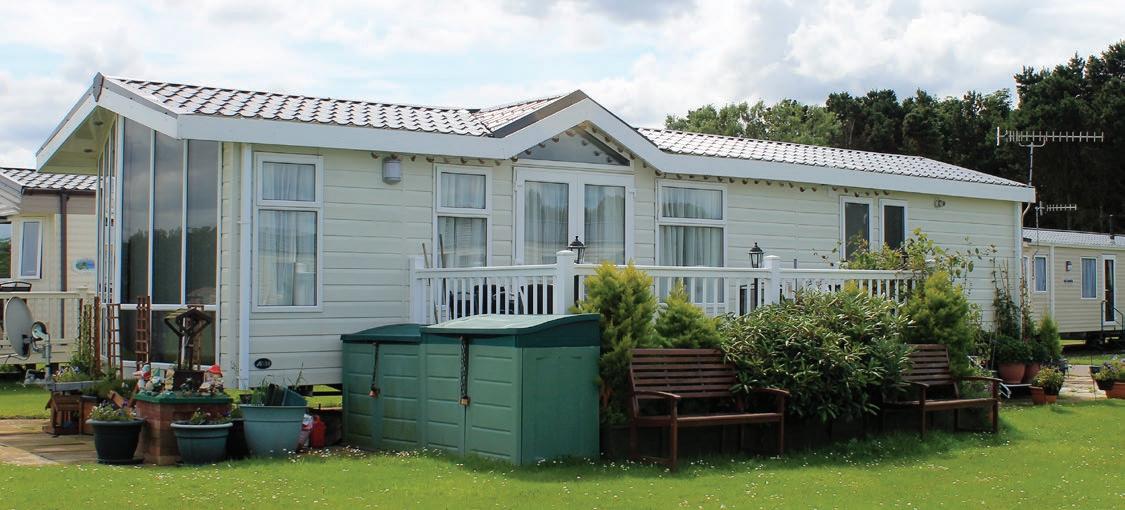
- 33 -
Cont.
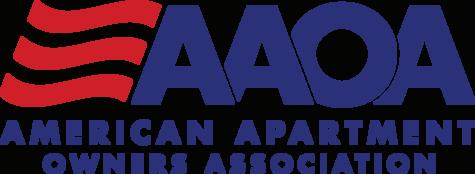
Giving You Guidance.
Empowering you with the rental industry resources & education you need.

Reliable credit/background checks
Option for landlord or tenant pay
LeaseGuarantee to protect your rental income

150+ Premium state-specific forms
20 Free landlord forms
Attorney reviewed & customizable
Unlimited recorded & live webinars AAOA Today e-newsletter Free access to RENT Magazine
E x c l u s i v e o f f - m a r k e t l i s t i n g s F i n a n c i n g f o r y o u r i n v e s t m e n t s V e n d o r d i r e c t o r y & d i s c o u n t s AAOA.com 866.579.2262 info@aaoa.com
D o w n l o a d L e g a l F o r m s F i n d Q u a l i t y T e n a n t s L e a r n
JOIN AAOA FOR FREE 19YRS S E R V I N G Y O U 139K M E M B E R S 11K R E V I E W S 3M U N I T S M A N A G E D G r o w Y o u r P o r t f o l i o
How To Use AI For Due Diligence on MHC/RV Parks


This is our 3rd article, and we promise you will take away a new resource or idea regardless of whether you are a new or veteran park investor
Okay, finally, here are the AI resources we’ve been hinting at in our 1st and 2nd articles This is the last of our three-part due diligence article series
Because we have a lot of AI resources and ideas to share, they are listed below by category, with no fluffy wording, and how-to.
By Joe Fairless
3. LeaseLock uses AI to analyze lease agreements, specifically risk profiles, to reduce bad debt and ensure term compliance.

Purchase LeaseLock – factoring in cost and size of property, manual lease audit may prevail
PHYSICAL AUDITING
1. Property Age and Condition
ChatGPT 4o (released May 2024) vs 4 0 is much more impressive when it comes to generating outputs across text, audio, and image modalities For example, a less experienced investor could upload a picture of a mobile home and ask about its age Assessing visual conditions such as fence rot and the % of damaged areas has also become impressive

2. MHC or RV Park Expansions


Install the ChatGPT app or use on desktop
Doxel AI can be used in conjunction with drone images and videos to track discrepancies and problems, such as using AI to auto-detect utility connections, homes, roads, amenities, and other identified objects. It can auto-detect hazards, damage, or poorly placed assets and compare placement to code (structural regulations) and lot size requirements

Purchase Doxel - can be pricey for smaller projects


DATA AUDITING
1. Market Analysis
– Reonomy can help dig up contact info and use AI to show property trends, history, and demographics AI is used to cleanse and augment a lot of data from different sources And, if you’ve ever wondered how the hell an investor got your cell, your wife’s cell, and your kids, they probably used Reonomy!

Purchase Reonomy
2. Rent Roll and P&L Audits
– Google Sheet AI Plug-in can help find duplicate names (landlords), calculate average turnover, detect inconsistent rent payments, and identify utility bill-backs that fluctuate more than 20%, among other issues

Install the AI plug-in on Google sheets
3. AI Auto-Detect/Count
– DJI Terra, Pix4D, and Kespry are commercial drone software that autonomously fly properties and use AI to auto-detect/ count structures, vehicles, and trees Also identify roof damage and leaks


Purchase drone software
Purchase a drone - DJI recommended
Bonus tip: For home and roof leaks, which can be costly, additionally purchase a Mavic 3 Thermal, which uses hardware-level thermal detection – very different from software detection! We also have a Mavic 3E in our fleet, which accommodates 4K resolution for massive parks (500+ lots) at quadruple the speed of other drones and its predecessor, the Mavic II Note, check commercial drone compatibility charts
- 35 -
How To Use AI For Due Diligence on MHC/RV Parks Cont.

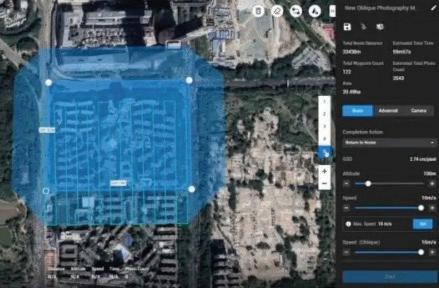
ENVIRONMENTAL AND ZONING
1. Analyze Environmental Data
Ecobot can automate the collection and analysis of environmental data
You may be wondering – does Ecobot replace a Phase I/II? No, it does not However, it is good to be aware of applications such as this that can be incorporated into Phase I reports in the future for current data Phase I is unique in that it pulls historical data

Purchase Ecobot - you would likely not use it unless doing a large field study or expansion.
2. Zoning
ZoningHub can automate layers of zoning regulations and make it easy to find details quickly.
Integrates with GIS layers for visualizing compliance Does this replace industry zoning reports like a KeyZoning report? It depends on how you are using it For example, some financing requires known industry reports. For an investor, some industry reports fail to analyze issues and can provide incomplete results due to standardized reporting Using your software to analyze code details, complemented with accurate map data, can highlight all compatibility issues

Purchase ZoningHub - monthly subscription
THANK YOU!
We hope you enjoyed reading our resource article on how to use AI for due diligence Please email us if there is a topic you would like us to cover in the next article! Hint – there’s a lot more you can do with AI for MHC/RV park operations!


About the Author: Steve Edel, Partner at MHC Due Diligence Partners, Serial Entrepreneur - Tech and Real Estate Companies | Multiple Company INC 500 | Acquired 50 MHCs Across Multiple States | Speaker at Industry Events Like TMHA, TexCO, and MHI. Email: Steve@DueDiligencePartners.com
Questions?
Contact: Steve Edel, 512-426-6869, Steve@DueDiligencePartners.com

- 36 -
Texas’ Manufactured Housing Booming
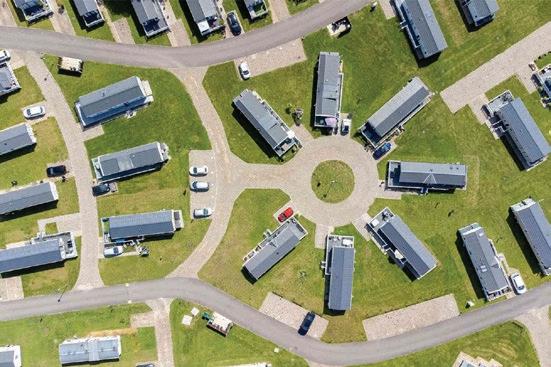
COLLEGE STATION, Tex (Texas Real Estate Research Center)
– Manufactured housing activity is booming across Texas, according to the latest Texas Manufactured Housing Survey (TMHS) The business-activity index reached a cycle-high and extended a 15-month stretch of positive readings as production accelerated and sales growth held firm.
“On the retail front, the first quarter has seen a large yearover-year increase in multi-section home placements,” said Rob Ripperda, vice president of operations for the Texas Manufactured Housing Association (TMHA) “Those larger homes sell at higher price points than single-section homes and would indicate that retailers are getting foot traffic from higher credit-quality purchasers ”
Some of that shift in product mix may have contributed to manufacturers’ reports of higher prices received for finished homes
Multi-section homes, however, are also more costly to construct
“From the manufacturers’ perspective, that’s at least two floors to build as opposed to the one floor it takes to deliver a singlesection home ”
“With real-property mortgage rates remaining elevated,” Ripperda said, “the spread between personal-property loans for a new manufactured home and a 30-year fixed for an existing home and land deal are very close, and the personal-property deal has a much lower cost to close in both money and time ”
Macroeconomic factors could maintain the narrow spread for the remainder of this year, as the Federal Reserve continues to fight inflation while balancing the labor market.
By TRERC
“While inflation has decelerated substantially from its postpandemic peak, most measures indicate that price appreciation is running higher than the Federal Reserve’s 2 percent target,” said Wes Miller, senior research associate at the Texas Real Estate Research Center at Texas A&M University. “Inflationary pressure appears to be picking up in the manufactured housing industry, with all TMHS respondents indicating higher prices paid for raw materials for the second consecutive month A portion of these prices are passed through to retailers and eventually consumers ”
The latest Federal Reserve Bank of Dallas’ Texas Manufacturing Outlook Survey suggests a similar reacceleration has not occurred across the broader manufacturing industry
The run-up in manufactured housing production has relied on a year-long hiring spree, reflected by a record-high reading in the TMHS number-of-employees index Manufacturers also increased employee workweeks to satisfy the volume of new orders
“Texas’ housing manufacturers are benefiting from the broader labor-market stabilization, allowing them to expand payrolls without engaging in the wage wars that occurred in 2022,” said Miller “We are also seeing signs of growing labor supply across the nation, which is tempering costs despite housing manufacturers’ robust demand for workers ”
The combination of these conditions supported substantial optimism across Texas’ manufactured housing industry regarding the second half of 2024 A steady increase in capital expenditures suggests confidence in the longer-term outlook as well
Bryan Pope | Managing Editor
Texas Real Estate Research Center
Division of Academic and Strategic Collaborations | Texas A&M University 2115 TAMU | College Station, TX 77843-2115 P 979.845.2088 | F 979.845.0460 b-pope@tamu.edu | recenter.tamu.edu

- 37 -






“Reality Versus Empty Posturing”
Henry David Thoreau, in the classic, “Walden,” lamented that “shams and delusions are esteemed for [the] soundest truths, while reality is fabulous ” He observed that if “men would steadily observe realities only” and “not allow themselves to be deluded,” life would be far better Although those words were penned nearly two centuries ago, they remain as poignant, relevant and accurate today (if not more so) as when they were first written. And one area where they should be applied- carefully and thoughtfully- in the context of federally-regulated manufactured housing, is with respect to the way that the industry itself refers to and promotes mainstream HUD Code manufactured housing, and presents manufactured housing, both as a product and as an industry, to the homebuying public and government decisionmakers including, most especially, those at the federal level, where manufactured housing is comprehensively regulated and controlled
In this regard, it is beyond any reasonable debate that “affordability” has always been the fundamental defining characteristic- and market-based driver- of the availability, acceptance and utilization of mainstream HUD Code manufactured homes Indeed, “affordability,” in both absolute and relative terms, is so central to the consumer market for federally-regulated manufactured homes, that the term “affordability” was inserted into federal manufactured housing law by Congress when it adopted the Manufactured Housing Improvement Act of 2000 (2000 Reform Law)
In that watershed law, which marked the emergence of today’s modern, high-quality, energy-efficient, mainstream manufactured housing, the term “affordable” or “affordability” is expressly used at least four times, while there are at least two parallel ( and effectively synonymous) references to “costeffectiveness.” Indeed, the very first legislative purpose of the 2000 Reform Law, as enumerated by Congress, is to “protect the quality, durability, safety and affordability of manufactured homes ” (Emphasis added) The point made abundantly clear by Congress, accordingly, as a matter of law, is that costeffective “affordability” lies at the heart of the construction, use and regulation of manufactured housing, and that elemental affordability is not to be undermined or subverted by other factors or considerations outside of imperative life-safety As such, affordability is the fundamental lynchpin of the three main pillars of federal manufactured housing law, as federal preemption, uniform federal standards and uniform federal regulation work in unison to yield inherently affordable manufactured housing and distinguish manufactured housing from all other types of factory-built housing
By Mark Weiss, MHARR
Nor has the concept and primary importance of affordability in relation to housing, homeownership, and the manufactured housing market somehow gone out of style over the 24 years that have elapsed since the enactment of the 2000 Reform Law If anything, the need for affordable housing and homeownership - at a time when housing affordability in the United States is at an all-time low - has never been greater As a result, federal government policies to promote the availability of “affordable” housing have never had a higher priority
How do we know this? For one thing, the Biden Administration is earmarking billions of dollars in federal spending on supposedly “affordable” housing It also stresses ( or at least pays lip service) to the need for “affordable” homeownership in its policy pronouncements In an April 2024 document, “Decarbonizing the U S Economy by 2050 - A Blueprint for the Buildings Sector,” for example, the Administration states: “Any pathway to decarbonization of the buildings sector must be centered in the cross-cutting goals of equity [and] affordability “ (Emphasis added) Nor is housing “affordability” some abstract, amorphous or metaphysical construct that has no specific or well-understood meaning. As HUD’s Office of Policy Development and Research (PD&R) noted in an August 2017 article, “Defining Housing Affordability,” “Housing programs in the United States have long measured housing affordability in terms of percentage of income *** Over time, [a] 30 percent threshold became the standard for owneroccupied housing, and it remains the indicator of affordability for housing in the United States ” (Emphasis added) By contrast, “households [that] spend more than 30 percent of income on housing costs [are] housing cost burdened ”
Measured against this standard, mainstream HUD Code manufactured housing has always been inherently affordable In 2022, the last full year for which census data is available, the average sales price of all new manufactured homes was $127,300 00 This compares to a $430,808 00 “average” for a site-built home, excluding the cost of land That same year, again according to U S Census Bureau data, real median household income in the United States was $74,580 00 At the census average price, a 20-year loan on a manufactured home with a 5% downpayment, would cost the borrower less than $1,000 00 per month, or slightly more than 16% of average gross income By contrast, a mortgage on the “average” site-built home, exclusive of land, would cost approximately $2,300 00 per month over a 30-year loan period at 7 0% interest, requiring 37% or more of the buyer’s gross income, a proportion that would be significantly larger based on net income following the deduction of income and
- 39 -
“Reality Versus Empty Posturing” cont.
other applicable taxes And, when the site-built information is brought forward to 2024, the current median monthly home mortgage payment in the United States is $2,775 00 a month, “the most expensive ever” according to media reports
Against this backdrop of all-too-real disappearing affordability within the broader housing market, it is mystifying and frankly astounding that some within the HUD Code industry would so readily surrender, dispense with and, effectively walk away from the language, concept and reality of “affordability” in relation to mainstream HUD Code manufactured homes, and instead embrace the meaningless linguistic blather of “attainable” housing (much like substituting the recently invented term of “off-site” -built housing for the traditionallyknown term “factory-built” housing) With this term appearing more frequently in both industry trade publications and broader media from manufactured housing producersamong others -- the industry would do well to consider the dangers and pitfalls of abandoning the well-known, welldefined and well-appreciated concept, terminology and reality of “affordability ”
So where has this abandonment of “affordability” manifested itself within the industry and -more importantly -why has it been advanced and promoted by some? The answers are fairly easy to find with a bit of research. The “where” question is perhaps easiest News releases published in recent years by Berkshire Hathaway, Inc subsidiary Clayton Homes, Inc (Clayton) tout “net zero energy” manufactured homes that -wait for it -are “attainable ” In an April 29, 2022 news release announcing a “net zero energy” home displayed at the Berkshire Hathaway shareholder meeting, Clayton noted that it was committed to build “attainable” homes
Subsequently, in a July 10, 2023 news release announcing the debut of manufactured homes “built to the U S Department of Energy’s (DOE) “Zero Energy Ready Home” specifications,” Clayton characterized those homes as a response to “rising home energy costs that threaten attainable homeownership ” (Emphasis added) And now -in a step that will come as a surprise to exactly no one - the Manufactured Housing Institute (MHI) has followed the lead of its largest manufacturer member, to embrace the term “attainable” manufactured housing in its messaging
So, what is an “attainable” manufactured home? What does that term mean? And why the retreat from “affordable” to “attainable?” Again, the answers are fairly straightforward
Depending on who you believe, a Clayton “net zero electricity home,” in 2022, cost just under
$230,000” before the cost of land and solar panels (per a Clayton news release), or “just under
$250,000 “with solar before land costs” (according to a media report) So, in short, a net-zero
manufactured home, in 2022, carried a price tag that was nearly double the 2022 cost of an
“average” mainstream manufactured home according to the U S Census Bureau It’s easy to see, then, why these homes are characterized with the meaningless word “attainable ” It is because they are not particularly “affordable” when compared with the average modem, energy-efficient mainstream manufactured home and could easily (with both solar panel and land costs) exceed the “affordability” benchmark of 30% of a borrower’s income for the lower and moderate-income Americans who currently-and historically-have constituted the core of the industry’s consumer base
And what causes these particular “factory-built” homes to be less than “affordable” for many? Because they seek to attain the climate-activist (and DOE) holy grail of net zero energy
consumption And in doing so -as MHARR has argued from day-one against the extremist DOE
manufactured housing energy standards -they will exclude huge numbers of Americans from the manufactured housing market, precisely because they will not be truly “attainable” or affordable for many, if not most, of the industry’s historical market demographic
According to a Consumer Finance Protection Bureau (CFPB) report issued in May 2021, the median income of a manufactured home purchaser (for both mortgage and chattel financing) was between $52,000 and $53,000 per year According to online resources, a person with an annual income of$52,000 could “comfortably” afford a home costing $158,624, with a 5% downpayment and a monthly payment of $1,300 per month (an estimated home only payment that does not include variables like site fees, utilities, taxes, insurance, or escrows) As noted above, this would cover the cost of the “average” modem-day, new, energy-efficient mainstream, HUD Code manufactured home But it does not cover - or even come close to covering - the cost of a $250,000( +) supposedly “attainable” net zero manufactured home, plus the cost of land and other essentials needed for net zero living
- 40 -
“Reality Versus Empty Posturing” cont.
This dichotomy once again proves and underscores the essential thrust of MHARR’s longstanding and aggressive opposition to DOE’s horrific manufactured housing “energy” standards What it does not answer, is why - other than for purposes of posturing, grandstanding ( or possibly glomming “energy” tax credits) - anyone in the manufactured housing industry would seek to economically disenfranchise nearly all of its current consumers and market Unlike the term “attainable,” “economic suicide” does have a specific meaning. And inviting it is not smart

Mark Weiss is the President and CEO of the Manufactured Housing Association for Regulatory Reform (MHARR) in Washington, D.C. He has served in that position since January 2015 and, prior to that, served as MHARR’s Senior Vice President and General Counsel.
Manufactured Housing Association for Regulatory Reform (MHARR) 1331 Pennsylvania Ave N.W., Suite 512, Washington D.C. 20004 Phone: 202/783-4087, Fax: 202/783-4075 MHARR@MHARRPUBLICATIONS.COM


- 41 -
Manufactured Home Loans In A Zip © 2022. Zippy, Inc. All rights reserved. Zippy is an Equal Housing Lender. As prohibited by federal law, we do not engage in business practices that discriminate on the basis of race, color, religion, national origin, sex, marital status, age (provided you have the capacity to enter into a binding contract), because all or part of your income may be derived from any public assistance program, or because you have, in good faith, exercised any right under the Consumer Credit Protection Act. The federal agency that administers our compliance with these federal laws is the Federal Trade Commission, Equal Credit Opportunity, Washington, DC, 20580. Home lending products offered by Zippy Loans, LLC. Zippy Loans, LLC is a direct lender. NMLS #2189776. 2807 Allen St., Suite 335, Dallas, TX 75204. Not available in all states (www. nmlsconsumeraccess.org). Full-Service Provider We finance new & used homes, LTOs, RTOs, RPOs, and down payment assistance programs.
in
5 Days 100% digital process means loans close in a zip. No Personal Recourse We replaced the personal guarantee with a short-term community guarantee to better address community owners’ needs. The Zippy Difference Contact us today to learn how to partner with Zippy! Chris Donsbach HEAD OF COMMUNITY PARTNERSHIPS chris@zippymh.com (865) 257-8249 Innovative Funding Solutions Community Funding Zippy Funding Community-set lending criteria 100% digital experience No personal guarantee Zippy-serviced No fees out of pocket Market-set lending criteria
Close
As Little As
Affordable Housing & Mobile Home Park Investments in 2024
An the evolution of real estate, the pursuit of affordable housing solutions has become more pressing than ever As we navigate through 2024, mobile home park investments have generally emerged as a strategic and socially responsible avenue for those seeking to address the demand for affordable living spaces This article serves as a comprehensive guide, offering insights, strategies, and a roadmap for potentially successful mobile home park investments against the backdrop of the evolving affordable housing landscape
Affordable Housing Challenges in 2024:
The year 2024 brings with it a set of unique challenges for the affordable housing crisis Escalating housing costs, population growth, and economic fluctuations contribute to the urgency of finding sustainable solutions, to cater for those that can’t afford the exorbitant housing prices Mobile home park investments present a typically viable and accessible approach to meeting the growing demand for affordable housing options

Advantages of Mobile Home Park Investments in the Affordable Housing Sector:
1. Historical Affordability and Accessibility:
Mobile home parks generally provide an affordable and accessible housing solution for individuals and families As the cost of traditional housing continues to rise, mobile homes often offer a more budget-friendly alternative, making homeownership achievable for a broader demographic
2. Potential Steady Cash Flow for Investors:
Investing in mobile home parks often translates to a reliable and steady cash flow for investors The land lease model, where residents own their homes but lease the land, potentially ensures a consistent stream of income This stability is particularly attractive for investors navigating the uncertainties of the real estate market Keel Team adopts a
By Tristan Hunter, Keel Team
similar way of thinking and we aim to convert all our Park Owned Homes to Tenant Owned Homes before we likely refinance through agency debt (Fannie Mae/Freddie Mac).
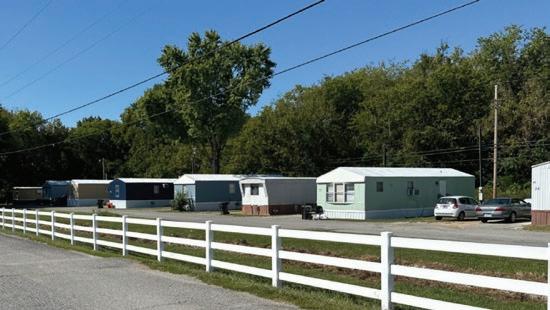
3. Community-Centric Living:
Mobile home parks usually foster a sense of community among residents This community-centric living model often contributes to tenant stability, reduces turnover rates, and enhances the overall appeal of the investment Creating a supportive and engaging community environment can likely solidify the success of mobile home park investments The goal is to foster tenant retention by improving their lives and the community around them
Strategies for Potentially Successful Mobile Home Park Investments in 2024:
1. Conducting Thorough Market Research:
In-depth market research is a crucial first step for investors eyeing mobile home park opportunities in 2024 Understanding local demographics, economic conditions, and housing demands can inform strategic investment decisions and contribute to long-term success
At Keel Team, we aim for markets with a median income of $40,000 per year, median home price of at least $100,000 and the three bedroom apartment rental rate at least $1,000 This buy box has helped us acquire mobile home parks in secondary markets where most investors would not take the risk on This overall suits the Keel Team’s model better and works in hand with Government Sponsored Entities like Fannie Mae/Freddie Mac, who aim to improve affordable housing in these markets
2. Embracing Technological Integration:
Leveraging technology is often paramount for successful mobile home park management Implementing property
- 42 -
Affordable Housing & Mobile Home Park Investments in 2024 Cont.
management software like Rent Manager with PayLease Integration, smart home technologies, and online communication platforms, not only potentially streamlines operations but also enhances the overall resident experience
3. Diversifying Revenue Streams:
Diversification within mobile home park investments can potentially mitigate risks and contribute to sustained success Exploring additional revenue streams, such as offering amenities or partnering with local service providers, can enhance the overall financial health of the investment. Squeezing every dollar out of the asset involves utilizing every inch of the property because commercial property value is measured on the income it produces Ancillary income, renting storage to residents, provisions for 3rd party RV or boat storage are all typical ways of squeezing the asset for its worth
4. Sustainable Community Development:
Investors can likely enhance the appeal of their mobile home parks by focusing on sustainable community development This includes eco-friendly initiatives, efficient waste management, and creating communal spaces that contribute to the well-being of residents Recycling initiatives, reduced waste incentives and rewards for sustainable practices could contribute to this

5. Legal Compliance and Regulation Understanding:
Navigating the legal landscape is critical for mobile home park investors Before investing in a mobile home park, it’s essential to verify with local zoning and building departments to sidestep unforeseen and unnecessary complications when trying to fill vacant spaces. For instance, one of the first parks Keel Team purchased had a restriction against bringing in homes more than 10 years old Issues like these could lead to budget overruns
Some local authorities may have a negative perception of mobile home parks, which can complicate operations and the process of adding new homes It’s important to obtain a zoning confirmation letter from the zoning officials, confirming that the property is legally zoned for use as a mobile home park, to avoid the risk of closure
Challenges and Mitigation Strategies:
While mobile home park investments offer numerous advantages, challenges may arise, including economic downturns, regulatory changes, and tenant turnover –especially in the first few months of ownership. Try not to worry too much if you experience increased tenant turnover in the beginning – its common in this space As you start improving the community, increasing the value perception and curb appeal, you will most likely have plenty of interest to fill those vacant homes Luckily, mobile home parks are historically resilient in times of economic downturns and uncertainty At the end of the day, everyone needs housing, right? Especially in times of crisis
Conclusion:
In conclusion, mobile home park investments present a promising opportunity for investors to contribute to the affordable housing crisis solution in 2024 By understanding the challenges, embracing strategic approaches, and mitigating potential risks, investors can likely chart a course for potentially successful mobile home park investments Beyond historical financial returns, these investments have the potential to create thriving communities, address the demand for affordable housing, and foster a socially responsible approach to real estate in the years to come As the pursuit of affordable housing takes center stage, mobile home park investments often stand as a beacon of opportunity for those seeking both financial prosperity and a positive impact on society
At Keel Team Mobile Home Park Investments, our mission is twofold: to uplift communities and to potentially optimize investor returns We prioritize enriching the lives of residents while potentially ensuring robust profits for our partners.

Tristan Hunter
Passionate about real estate and affordable housing, I contribute towards the success of Keel Team Real Estate Investments in Oviedo, Florida. I manage investor relations, and successfully raise capital for syndicated commercial real estate investments. With diverse experience in real estate, construction and project management, I bring a multifaceted skill set.
- 43 -
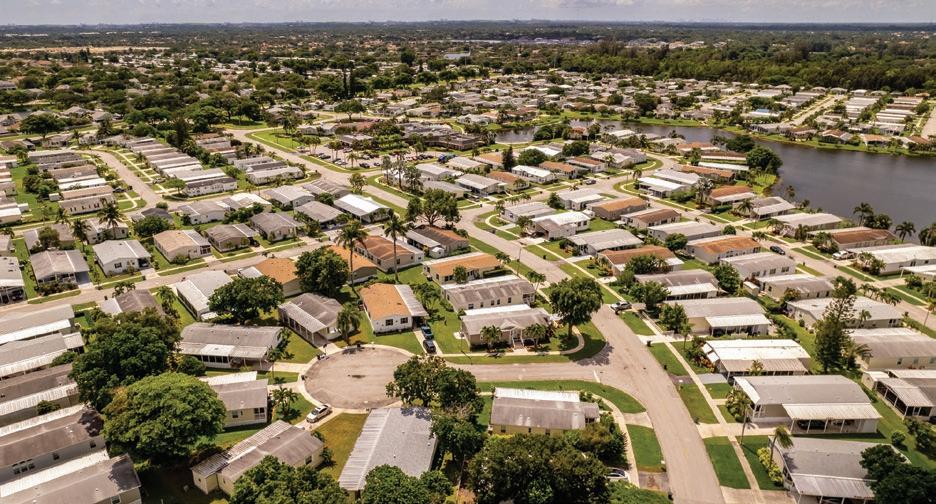


800.945.4440 www.stylecrestinc.com The Only National Supplier from Coast to Coast! Electrical Windows Plumbing Doors Set Up Supplies Foundation Covers Steps & Rails HVAC
LLC vs. Trust for Real Estate: Which Is Right for You?
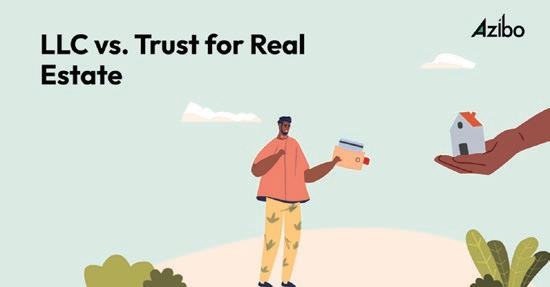
Choosing between an LLC or a trust for your next real estate investment? Learn the benefits and drawbacks of each structure for liability, asset control, and taxes to decide the best option for you
Selecting the right legal structure for your real estate investments has significant implications for your business. Two popular options for real estate investors are forming a limited liability company (LLC) or establishing a trust
Both LLCs and trusts offer distinct advantages and disadvantages, and the right choice depends on your specific goals, long-term plans, and risk tolerance Key decision factors you should consider include asset protection, tax minimization, and ease of management
In this article, we’ll take a closer look at LLCs and trusts, examining their characteristics, benefits, and drawbacks. Once you have the details of each structure, you can make decisions that match your investment strategy and objectives
Creating an LLC for your rental property
An LLC (limited liability company) is a separate business formed under the law of the state in which your rental property resides

When you create an LLC for your rental property, the LLC becomes the legal owner of that property instead of you personally This separation between your personal assets and your business assets is a key benefit of an LLC structure.
By Nichole Stohler
Two main types of LLCs for rental property include:
• Single-member LLCs: Have only one owner, also known as a member This is a common choice for individual real estate investors
• Multi-member LLCs: Two or more members form this LLC This structure is suitable for partnerships or groups of investors who want to own rental properties together
Before deciding to use an LLC for your investment properties, consider both the pros and cons. An LLC offers benefits like personal asset protection and flexible ownership, but it also has potential drawbacks that you should be aware of
Advantages of an LLC
• Separate legal entity: Provides a shield between personal assets and potential liabilities related to the rental business
• Flexible ownership structure: Allows for single or multiple owners, including individuals, corporations, and other entities, and is adaptable for various investment strategies
• Pass-through taxation: Avoids double taxation and lets members report income and losses on their personal tax returns
• Transferable ownership: Enables members to buy and sell ownership shares without necessarily selling the rental properties, providing flexibility in managing investments.
• Capital contribution options: Permits members to contribute equity capital or provide debt financing through loans to the business
• Limited personal liability: Protects members’ personal assets from potential legal liability related to the rental business, provided necessary formalities are followed
Disadvantages of an LLC
• Compliance obligations: State requirements for annual filings, meetings, record keeping, and fees can be burdensome
• Additional self-employment taxes: Members must pay a 15 3% self-employment tax on rental income in addition to regular income taxes
• Potential loss of liability protection: Participating in illegal activities can result in the removal of personal asset protection
• Ownership transfer complications: Some states require dissolving and re-forming the LLC when membership changes occur
• Limited capital raising options: LLCs may face challenges in raising substantial outside capital compared to corporations that can sell public stock
- 45 -
Photo courtesy of Azibo
Photo courtesy of The Motley Fool
LLC vs. Trust for Real Estate: Which Is Right for You? cont.
Establishing a real estate trust for your investment property
A real estate trust is a legal arrangement set up at the state level to hold rental property assets It’s different from an LLC, because it’s not a business entity
People commonly use trusts for estate planning purposes to avoid estate taxes, keep rental properties within the family, and to bypass the probate process

There are two main types of trusts you can use for rental property:
1. Revocable trust: This type of trust lets the original property owner (grantor) make changes, control and manage the trust assets directly, and end the trust during their lifetime After the grantor’s death, it becomes irrevocable
2. Irrevocable trust: In this arrangement, the grantor transfers ownership of rental properties into the trust, which a trustee manages according to the trust instructions The grantor gives up control over the assets
Before choosing a real estate trust for your rental properties, consider the advantages and disadvantages to determine if it’s the right fit for your needs.
Advantages of a real estate trust
• No recurring fees: Unlike LLCs, which require annual fees and filings, trusts don’t have ongoing costs once set up.
• Estate planning: Helps rental property investors avoid estate taxes, smoothly transfer business assets to heirs, and avoid probate
• Multiple owners: Trusts offer a way for multiple owners of a rental property to document and manage their ownership interests
• Asset separation: A trust does not consider assets as part of the grantor’s personal holdings, which reduces individual tax liability
• Privacy: Provides more privacy than publicly-recorded LLC ownership details However, new government regulations are making this harder
Disadvantages of a real estate trust
• Limited liability protection: A trust doesn’t inherently shield the trustee or beneficiaries from liabilities related to the rental business
• Upfront complexity: Setting up a trust can be more complex and costly than an LLC, so legal assistance is often necessary
• Rigid structure: It’s more difficult to make changes to a trust’s structure compared to an LLC’s operating agreement
• Separate estate planning required: Even with a rental property trust, you’ll likely still need a will or other estate documents for assets not held in the trust
Factors to consider when deciding between options
Now that you understand the basics of LLCs and trusts for rental properties, it’s time to determine which structure best aligns with your goals and needs Consider the following factors to guide your decision-making process:
Assess your asset protection needs
• How much risk are you willing to take on?
• Do you have significant personal assets to protect?
• Consider the potential liabilities associated with your rental property
Evaluate your estate planning goals
• Do you want to pass your rental properties to heirs efficiently?
• Are you looking to minimize estate taxes?
• Consider how you want your assets managed after your death
Determine the current and future scale of your rental portfolio
• Are you planning to acquire more properties over time?
• Do you need flexibility in managing ownership interests?
• Consider the complexity of your investment strategy
Assess the potential benefits of combining an LLC and a trust
• Would you benefit from the liability protection of an LLC and the estate planning advantages of a trust?
• Consider the added complexity and costs of maintaining both structures
• Evaluate if using both an LLC and a trust aligns with your long-term goals
Real estate trust vs LLC: Making the right choice
Choosing between an LLC or a trust for your real estate investments requires consideration of your specific goals, willingness to take risks, and investment approach
- 46 -
Photo courtesy of FortuneBuilders
LLC vs. Trust for Real Estate: Which Is Right for You? cont.
While LLCs offer strong protection from liabilities and flexibility in operations, trusts can provide additional safeguards for your assets, benefits for estate planning, and potential tax advantages.
The best structure will depend on your unique situation and priorities. Ask for advice from a legal, tax, or financial advisor who can assess your situation and provide guidance to help you make the best decision
Should rental property be in an LLC or a trust? FAQs
What is the best type of trust for real estate?
For real estate ownership, a revocable living trust is often considered the best option It lets you keep control of the property while you’re alive and passes ownership to your beneficiaries after you die without needing probate.
What type of entity is a trust?
A trust is a legal arrangement, not a separate business entity
What is the difference between a trust and a sole proprietorship? A trust is a legal setup where a trustee manages assets for the beneficiaries’ benefit. A sole proprietorship is a business structure where one person owns and runs the business, with no legal separation between them and the business
Important note: This article is for informational and educational purposes only. This article should not be taken as legal advice or used as a substitute for such. You should always speak to your own legal counsel before taking action.

Stohler
Nichole co-founded Gateway Private Equity Group, with a history of investments in single-family and multi-family properties, and now a specialization in hotel real estate investments. She is also the creator of NicsGuide.com, a blog dedicated to real estate investing.
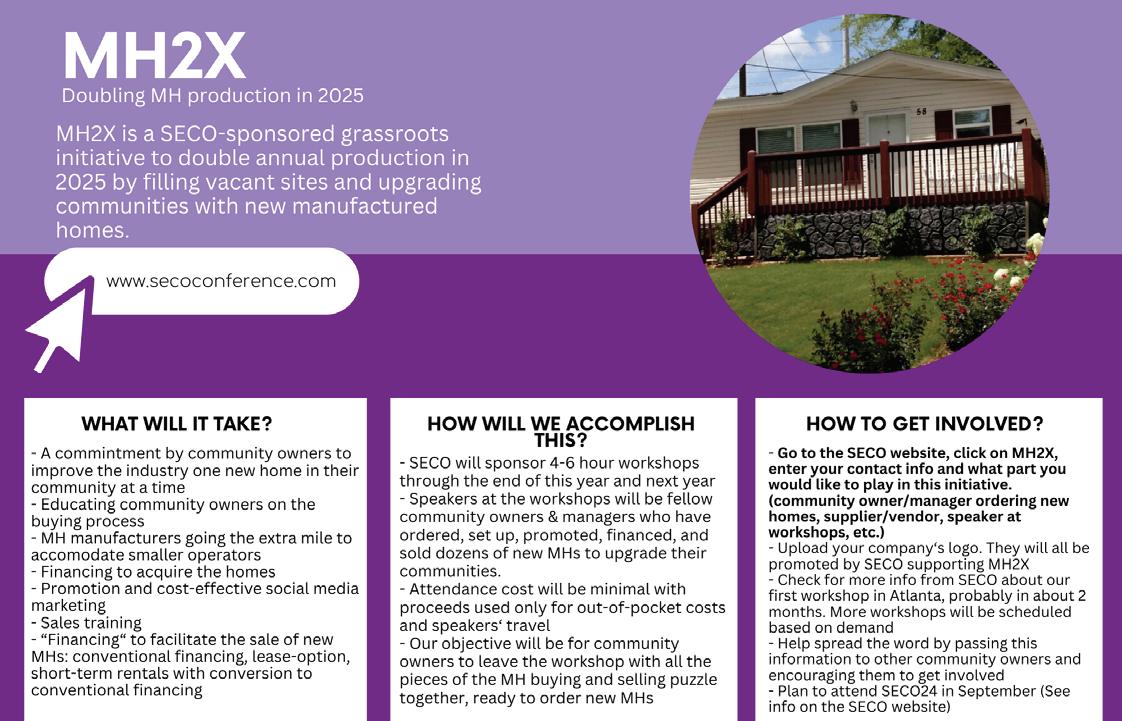
- 47 -
Nichole
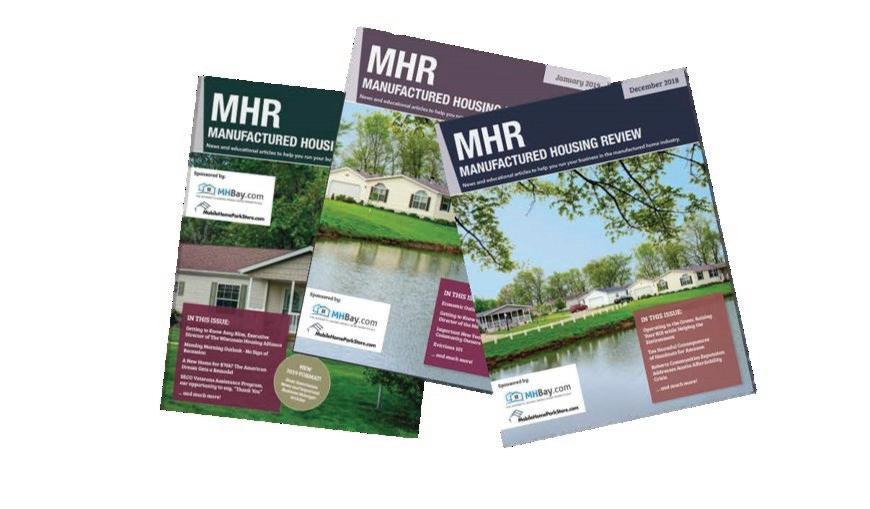
We are an electronically delivered quarterly magazine focused on the Manufactured Housing Industry From Manufactured Home Community Managers, to Retailers, to Manufacturers, and all those that supply and service them, we supply news and educational articles that help them run their businesses ManufacturedHousingReview.com Communications regarding any alleged offending, inappropriate, inaccurate or infringing content should be directed immediately to kkelley@manufacturedhousingreview com along with the communicator’s contact information Have something to contribute or advertise? Email us at staff@manufacturedhousingreview.com















































































































